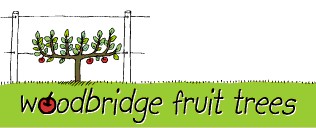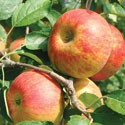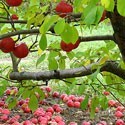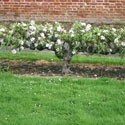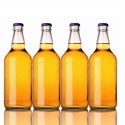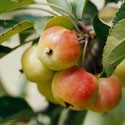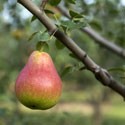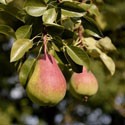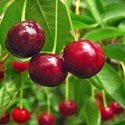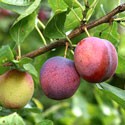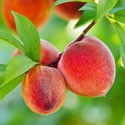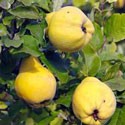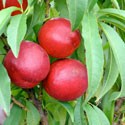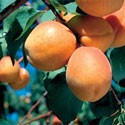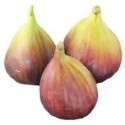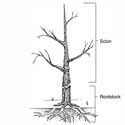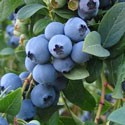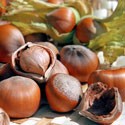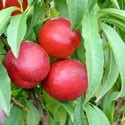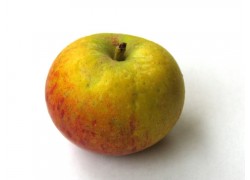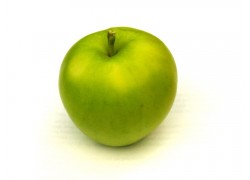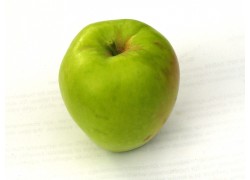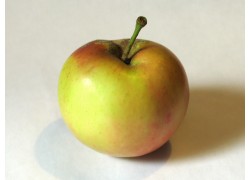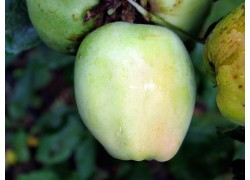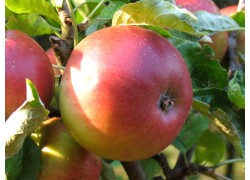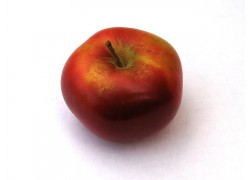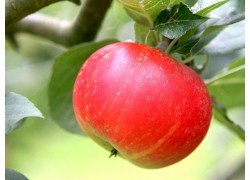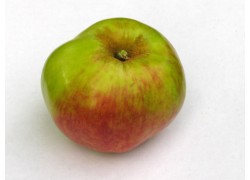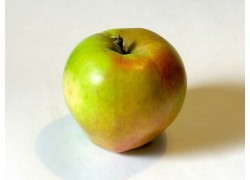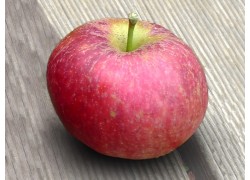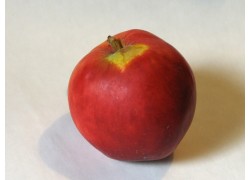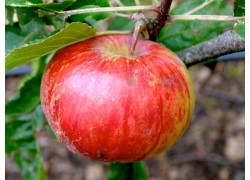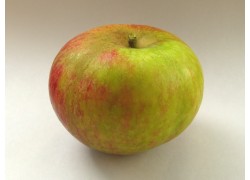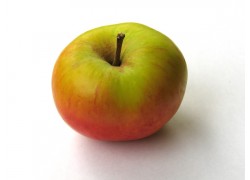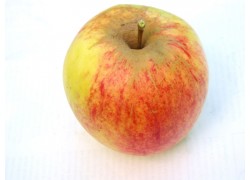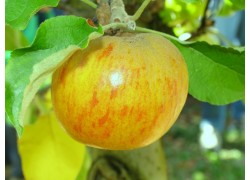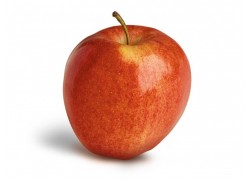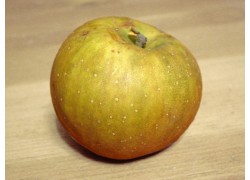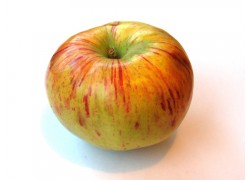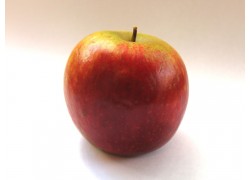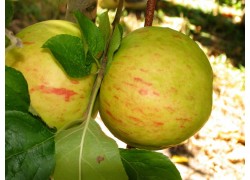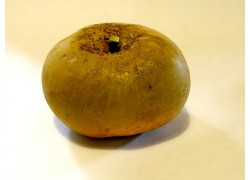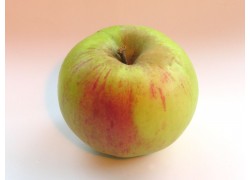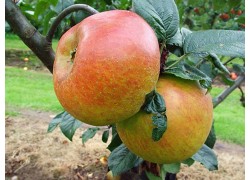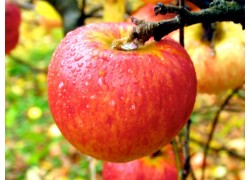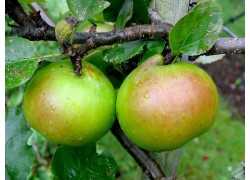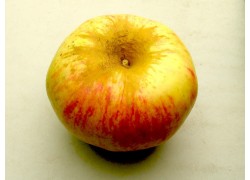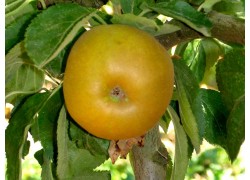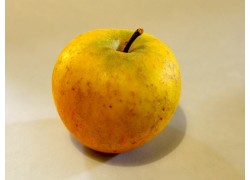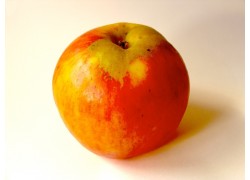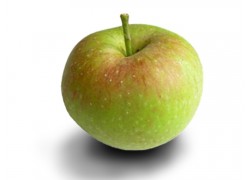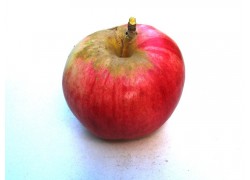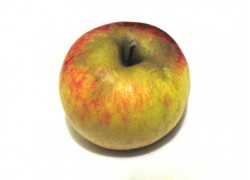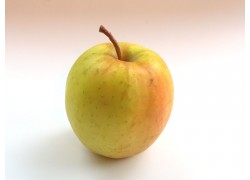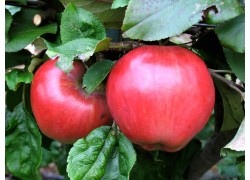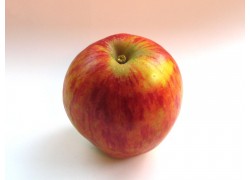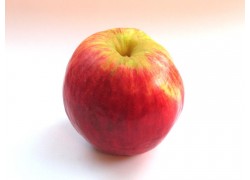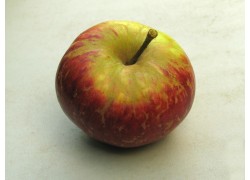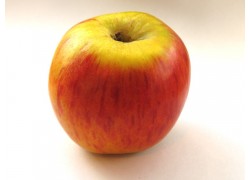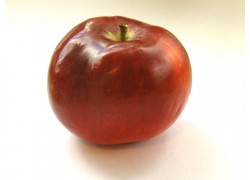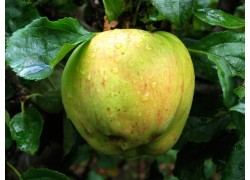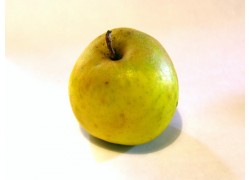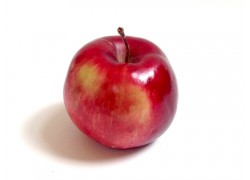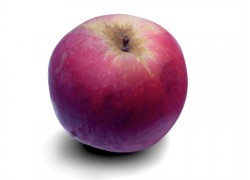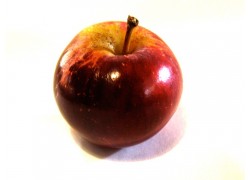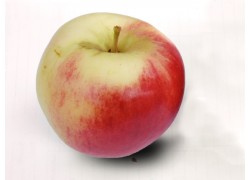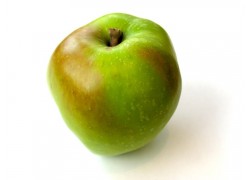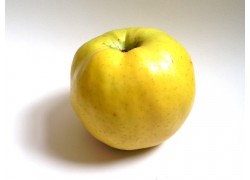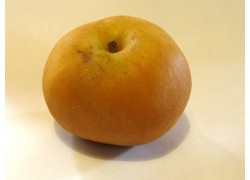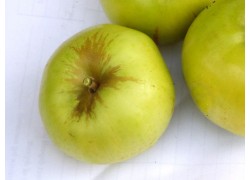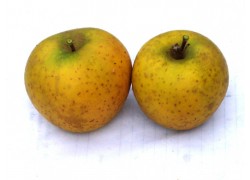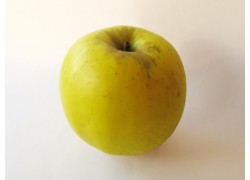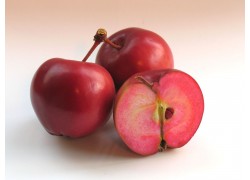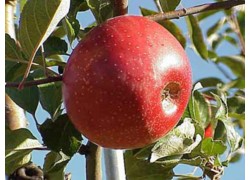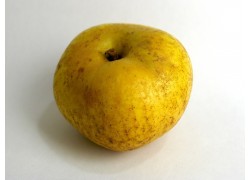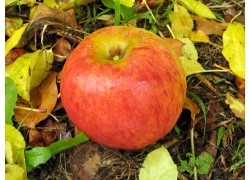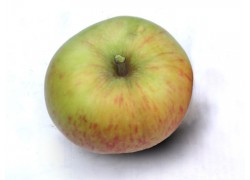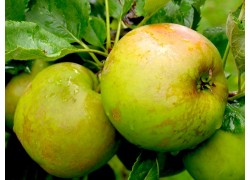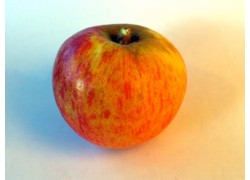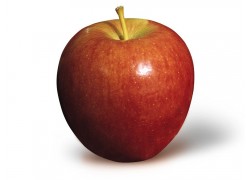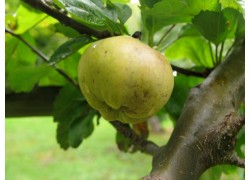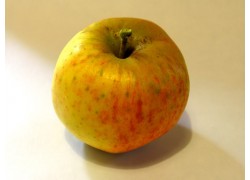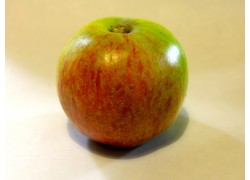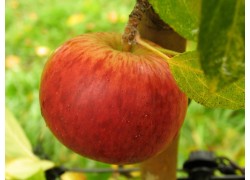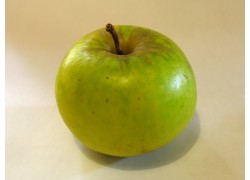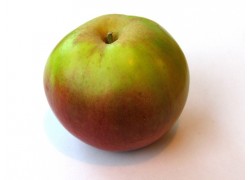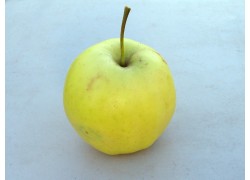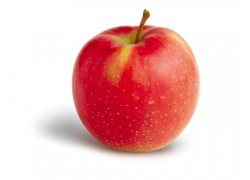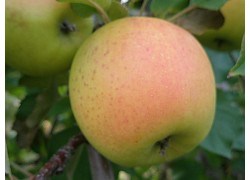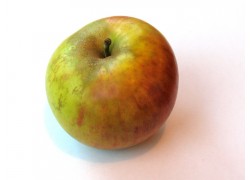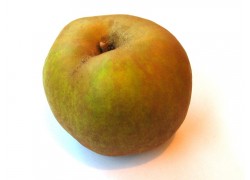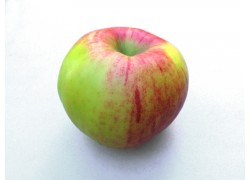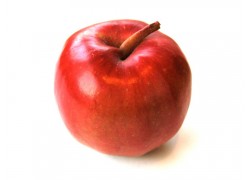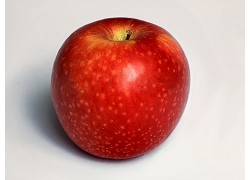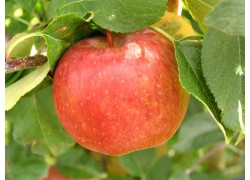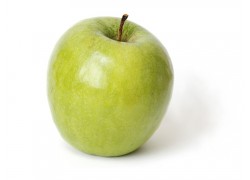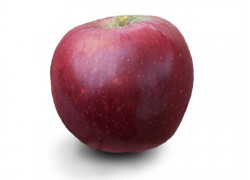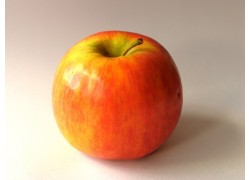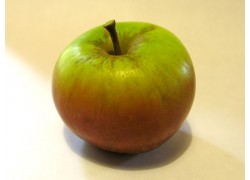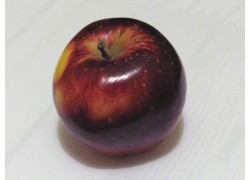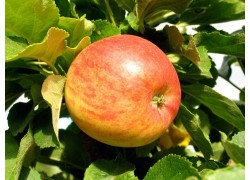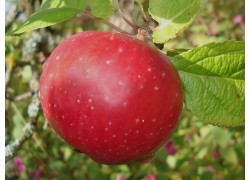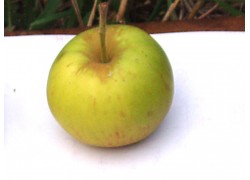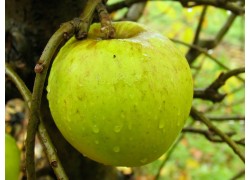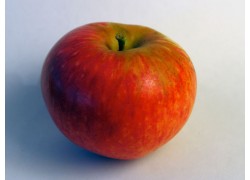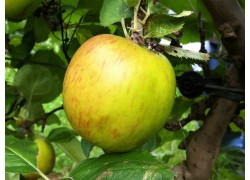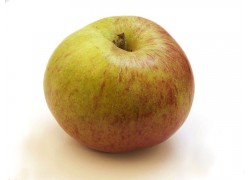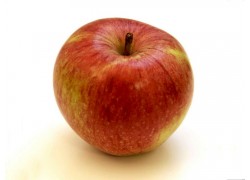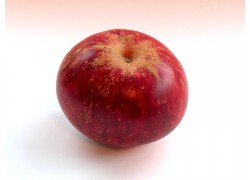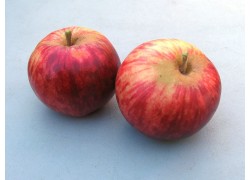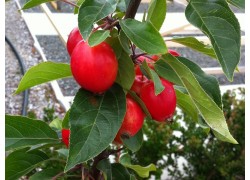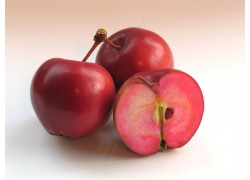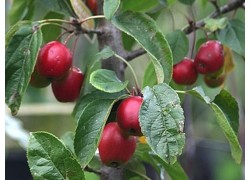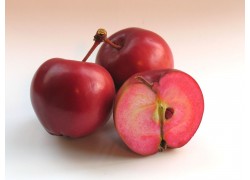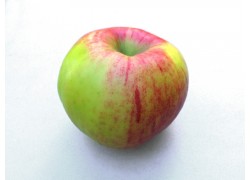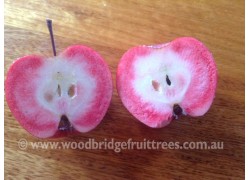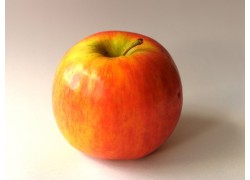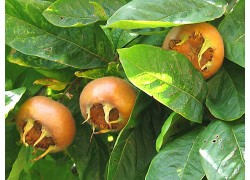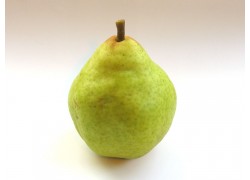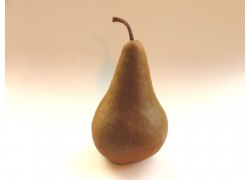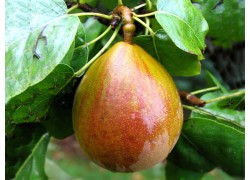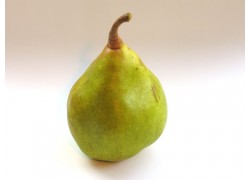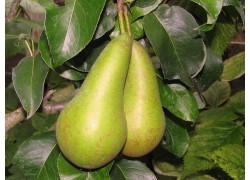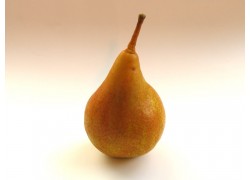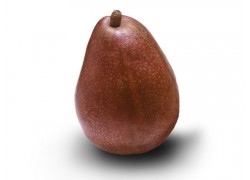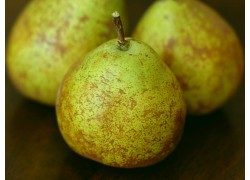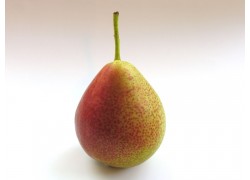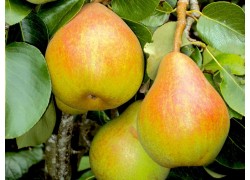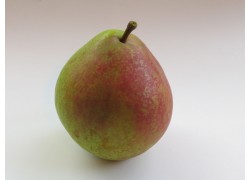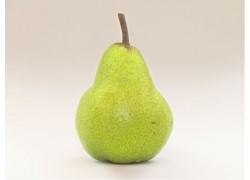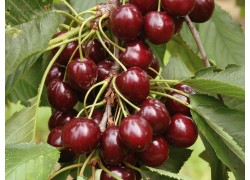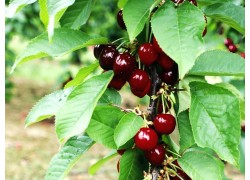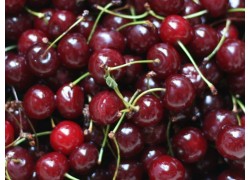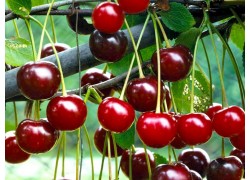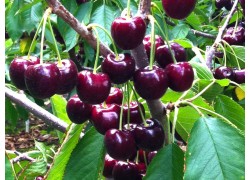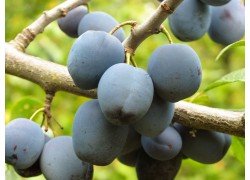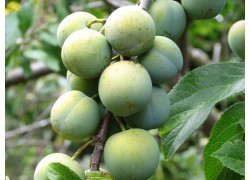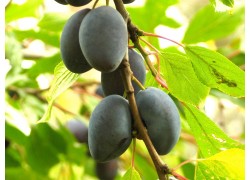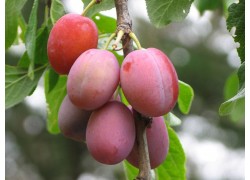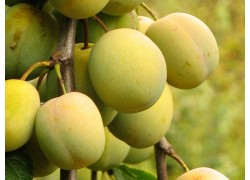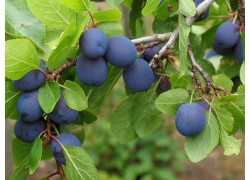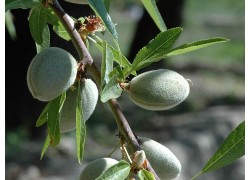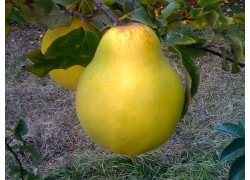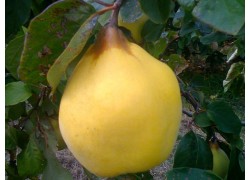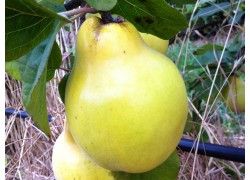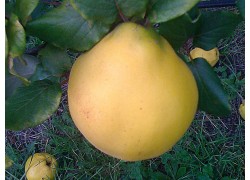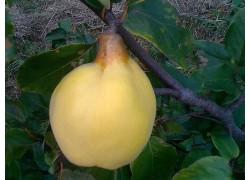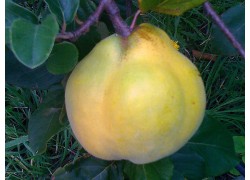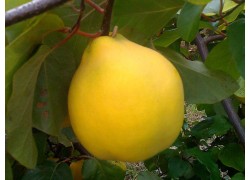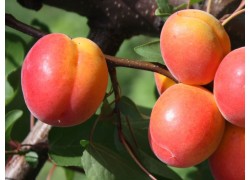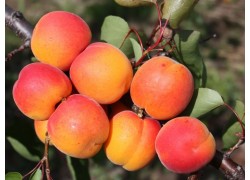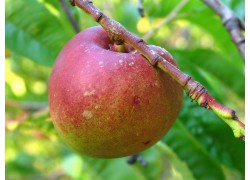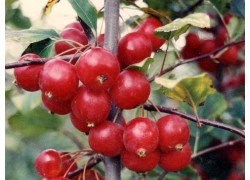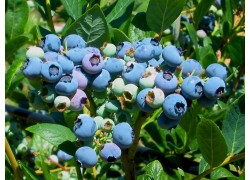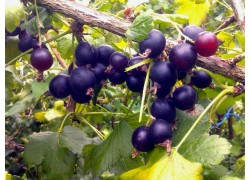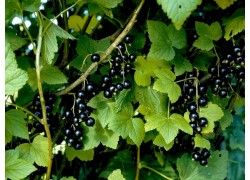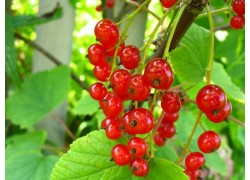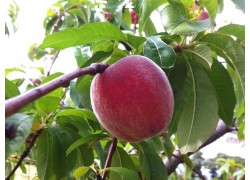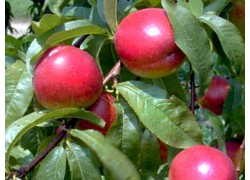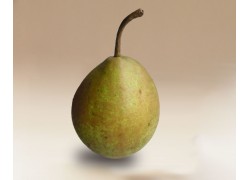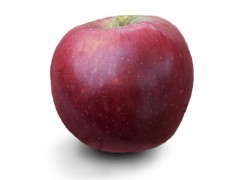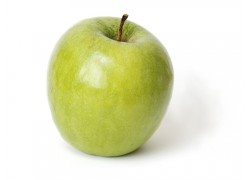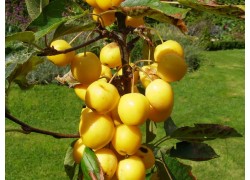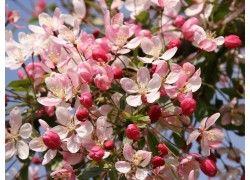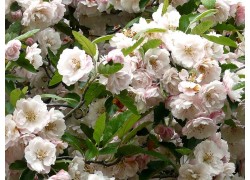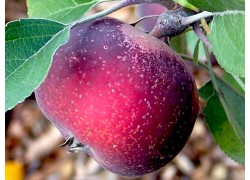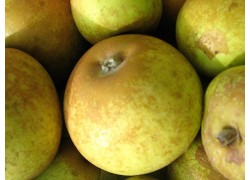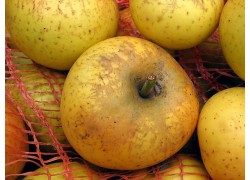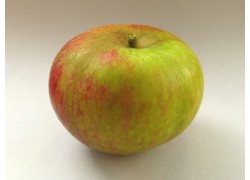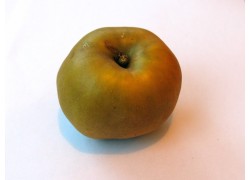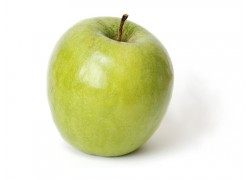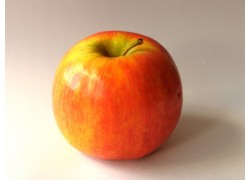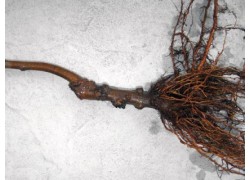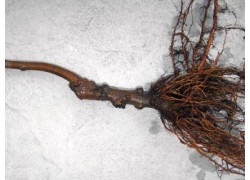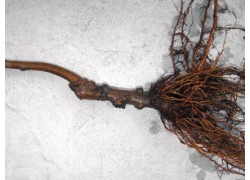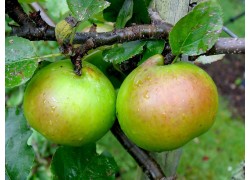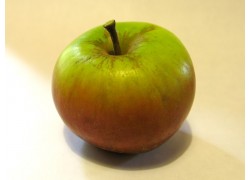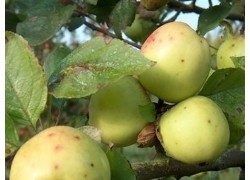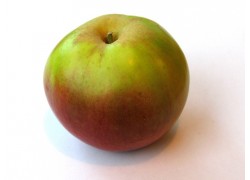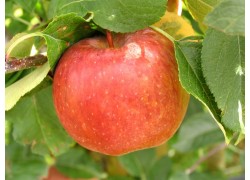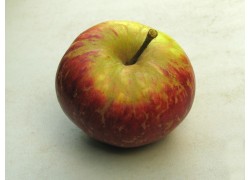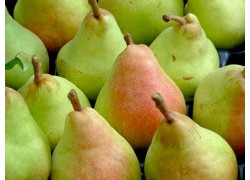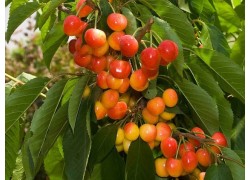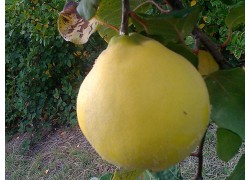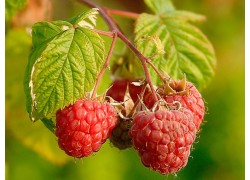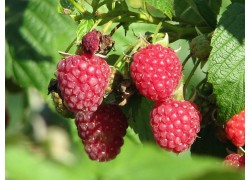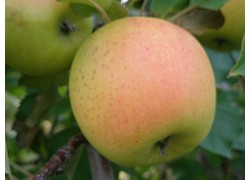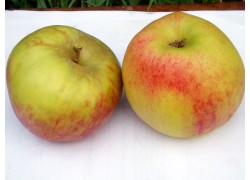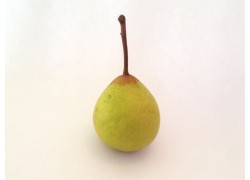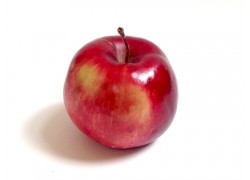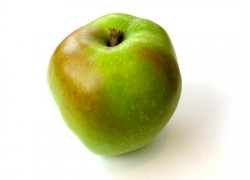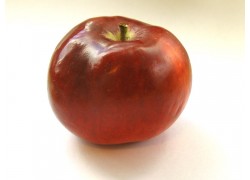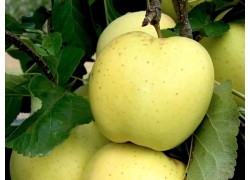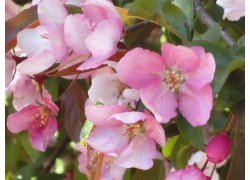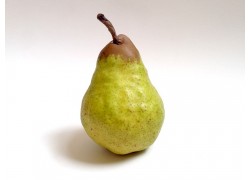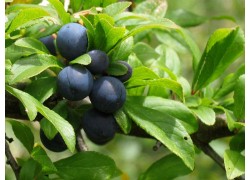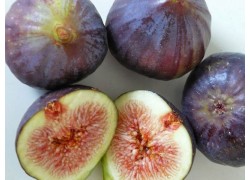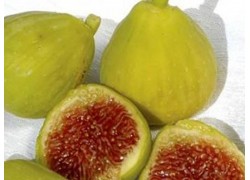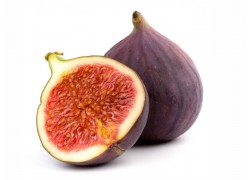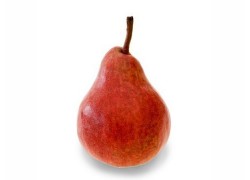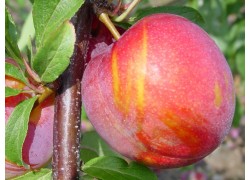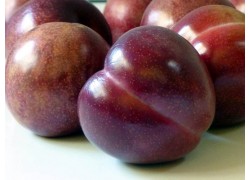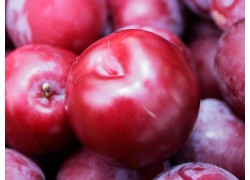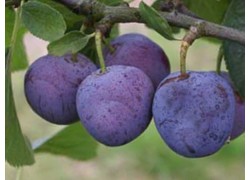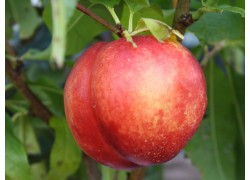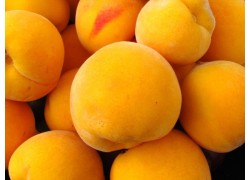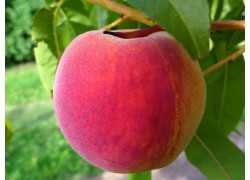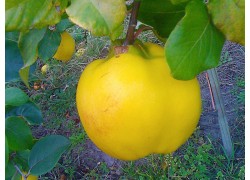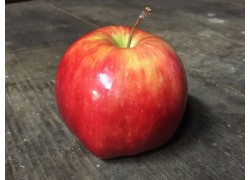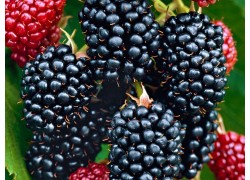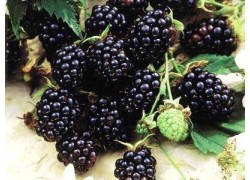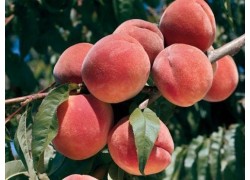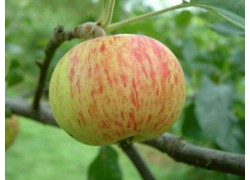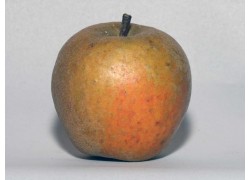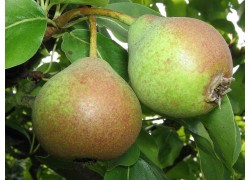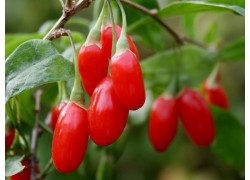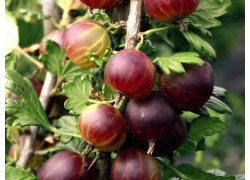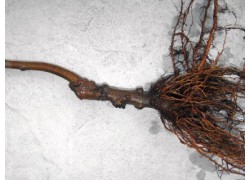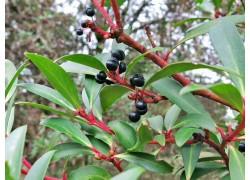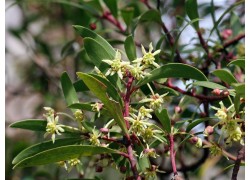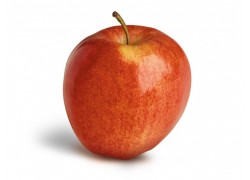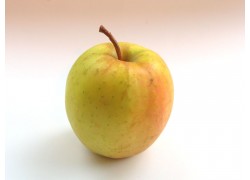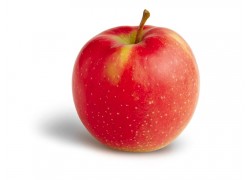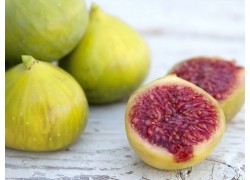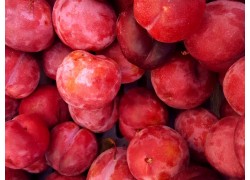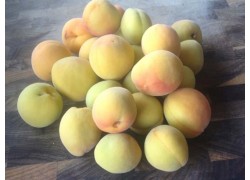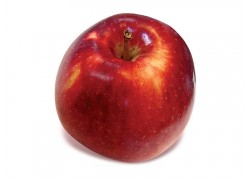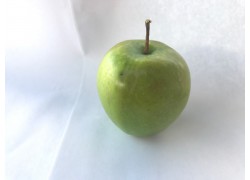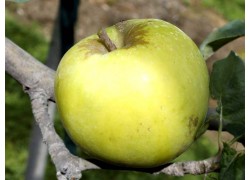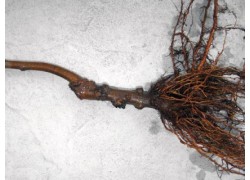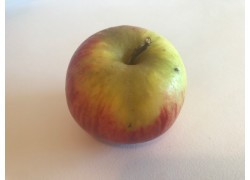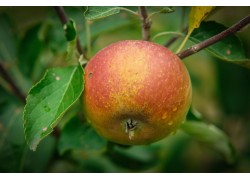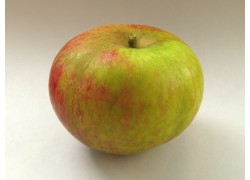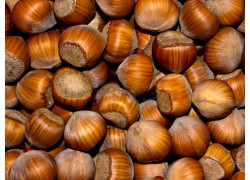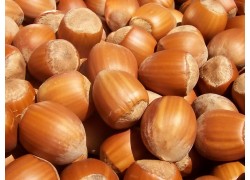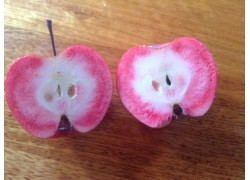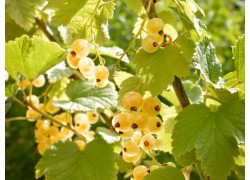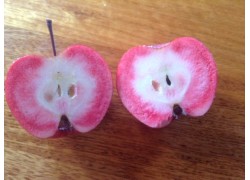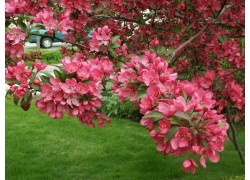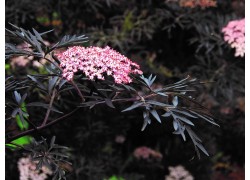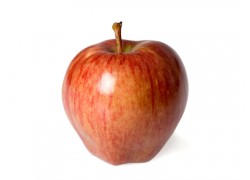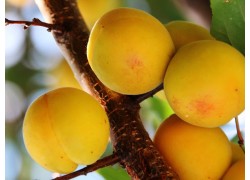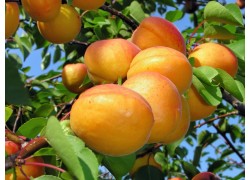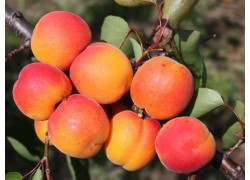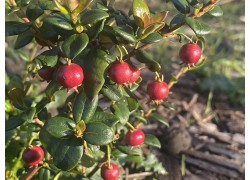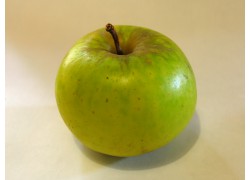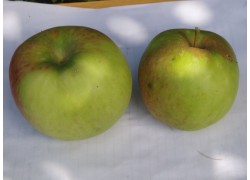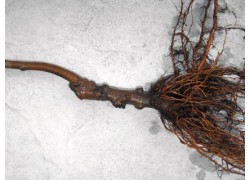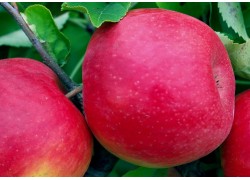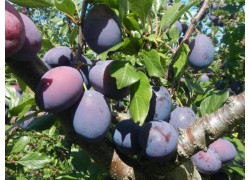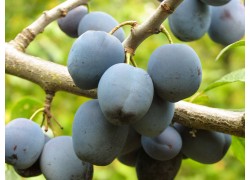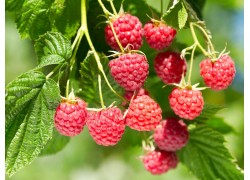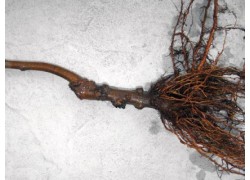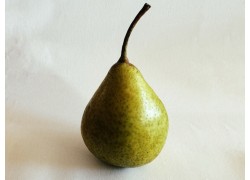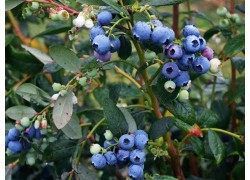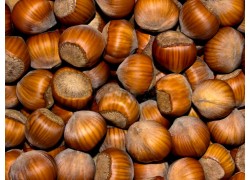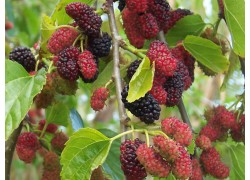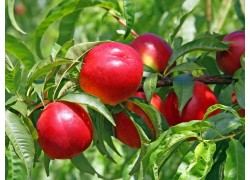No products
Filter
Our range of dwarfing and non-dwarfing fruit trees, nuts, berries.
Fruit Trees There are 246 products.
Subcategories
-
Dwarf Apples
Heritage apple varieties on DWARF rootstock. These apples are ideal for back yards, small orchards, espaliers or anywhere where space is tight. Varieties ripen from Christmas to July providing 6 months of fruit. Wee included some more recent varieties as well as historic ones. There are excellent eating apples, cookers, big, small, common and unusual. Something for every occasion.
-
Semi-dwarfing Apples
Heritage apple varieties on SEMI-DWARFING rootstock. These apples are ideal a free-standing tree, rather than espaliering. They are a little more vigorous than our dwarfing trees.
-
Stepover Apples
Step-over apple trees on EXTRA-DWARFING rootstocks. These highly sought-after trees can make productive hedges half a metre in height. Ideal for edging garden and vegetable beds, or a striking ornamental hedge. We tend to select later ripening varieties so that the fruit are hanging after the leaves have fallen. See our article on step-overs for more information.
-
Cider Apples
Cider apple trees on SEMI-DWARFING rootstocks. These are a selection of specialty cider varieties from the English and French cider traditions. They make superior cider (in the right hands!) and are to the cider world as to the Pinot Noir or Chardonnay are to the world of wine.
-
Crab Apples
Crab apple trees on SEMI-DWARFING rootstocks. These are considered as ornamentals, but can be used in juicing to offset the sweeter apple or pear. Highly regarded as pollinators for apple varieties because of their prolific flowering.
-
Dwarf Pears
Pear trees on DWARFING rootstocks. Dwarfing forms allow these pears to bear much earlier and make more manageable trees than the huge old pear trees seen on old farms. "Pears for your heirs" was the old adage pointing to their longevity, slowness of growth and bearing, and eventual large sized tree. The French (and Belgians) have been responsible for bringing pear culture to it's peak in the 1700s.
-
Perry Pears
Select from our range of Perry pears on Dwarfing rootstocks.
-
Cherries
Cherry trees on DWARFING rootstocks. The sweet cherry varieties we grow have been developed from the European bird cherry (Prunus avium), while the sour cherries (which are still tangy as well as sweet) have been developed from Prunus cerasus, a wild cherry from Asia. Cherries definitely need protection from birds and many growing methods have been developed to accommodate this eg. espalier, spanish bush or fans so that they can be netted.
-
Plums
Plum trees on NON-DWARFING rootstocks. The so-called European Plums we sell were introduced into Europe from Syria and Persia and are the product of long selection and development over the last 1000 years. Plums have pale greenish yellow flesh and rich sugary flavour, ripening in February. Generally two varieties are needed for cross pollination, although there are some that are self fertile. Esplaiering these shuold be done on a fan shape only.
-
Peach
Old style peaches on non-dwarfing rootstock. These are best grown as free-standing trees to 3-4m but can be espaliered in a FAN shape effectively keeping it below 1.8m.
-
Quinces
Quince trees on DWARFING rootstocks. Closely related to the pear, quinces are attractive trees, and the fruit wonderfully aromatic - treasured for cooking, tarts, preserves and jellies.
-
Nectarine
Old style Nectarines on non-dwarfing rootstock. These are best grown as free-standing trees to 3-4m but can be espaliered in a FAN shape effectively keeping it below 1.8m.
-
Apricots
Apricot trees on SEMI-DWARFING rootstocks. These are best grown as free-standing trees to 3-4m but can be espaliered in a FAN shape effectively keeping it below 1.8m. The Moorpark produces a smaller tree, and can be kept smaller on an espalier as well. Medlars produce small trees or can be espaliered easily to 1.5m.
-
Figs
Figs on non-dwarfing rootstocks. Knows for their sensuous fruit both fresh and dried. Figs like long hot summers but not too dry, with well drained soils, preferrably out of the wind. They tolerate being potted. -
Rootstocks
Rootstocks are used for grafting and budding onto. If you know or want to learn how to graft or bud, you can propagate yourself. This year we offer a handful of rootstocks, but sorry no quince or pears.
-
Berries
A selection of raspberries, blackberries, logans, blueberries, currants and other edible berries for the garden.
-
Nut Trees
Hazelnuts and almonds. Hazels are great for mass hedging, but can be trained into a small tree. Almond pollination can be tricky but this self-fertile one allows you to grow plenty with just one tree.
-
Dwarf Stone Fruit
Dwarfing Stone fruit - Peaches, Apricots, Plums, Nectarines. Idea for small espaliers or pots.

Loading...
Beauty Of Bath Dwarfing
Ripens: JanuaryA very popular old apple from the southwest of England during the 19th century. It's one of the earliest apples - maturing in most parts of Australia around Christmas. Small in size, its skin is an attractive red flush / stripe over yellow. The flesh is creamy white with a fairly sharp but sweet flavour and quite aromatic.
Out of stock$39.50 Out of stockEarly Victoria Dwarfing
Ripens: JanuaryThe earliest ripening cooking apple that we know of. Very prolific tree, laden with small bright green codling fruit. Eaten fresh, it's flesh is quite soft and the sweet acid makes your tongue tingle. From England around 1900. Cooks to a subacid fluffy consistency needing minimal sugar added.
In Stock$39.50 In StockSugarloaf Pippin Dwarfing
Ripens: JanuaryA long narrow shaped pale yellow apple with white on the sunny side. Crisp, with high acid content making it quite zingy eaten fresh and excellent cooked. A seedling from a white transparent and like it's parent doesn't keep long. Interestingly, it died out in England, and we have sent propagating material back to the UK.
In Stock$39.50 In StockVista Bella Dwarfing
Ripens: JanuaryIn our opinion the best of the early apples. It's from the McIntosh group developed in New Jersey, USA in the 1950's. It ripens about 10 days later than Beauty of Bath. Creamy yellow skin striped scarlet, smallish in size with a lovely perfumed crisp and juicy flesh.
In Stock$39.50 In StockWhite Transparent Dwarfing
Ripens: JanuaryAn amazingly popular apple by virtue of its many names (eg Klarapfel, Kornapfel, Augustapfel) and the many places in which it is grown. Can ripen as early as Christmas. The skin is a pearly pale green/yellow, with very sprightly acid / sweet taste that once tried is quite unforgettable. The flesh is often glassy. Should be eaten directly from the tree....
In Stock$39.50 In StockAkané Dwarfing
Ripens: JanuarySome consider this the best early commercial apple. It is actually a cross between Worcester Pearmain and Jonathan. It's deep red in colour with a few stripes, uncomplicated sweet flavour, is very crisp and stores / transports well for an early apple. Ripens late January.
Out of stock$39.50 Out of stockDevonshire Quarrenden Dwarfing
Ripens: January - FebruaryGrown extensively in the West Country of England as far back 1670, but probably of French origin. It has small fruit, crimson red in colour and yellow aromatic flesh that tastes a little of strawberry. Ripens in January - February. Cooks quite well.
In Stock$39.50 In StockDiscovery Dwarfing
Ripens: January - FebruaryAn early apple popular in the UK. Found in Essex in the 1940's it's a seedling of Worcester Pearmain. Like other early apples, the flavour is light and an on the acid side, but crisp and juicy. An attractive round shape if a little squat. It develops a bright red cheek over a light greenish yellow background. Well worth considering as an early eating apple.
Only a few left$39.50 In StockGravenstein Dwarfing
Ripens: January - FebruaryAn excellent early apple, grown commercially widely across the world, and still available in many parts of Australia in local markets. Good sized fruit, when ripe the Gravenstein is red and green, with a orange-yellow stripe and ultra crisp. Sweet juicy crunchy flesh, it's distinct flavour signals the beginning of the apple season in earnest. Polishes...
In Stock$39.50 In StockSweetman Dwarfing
Ripens: January - FebruaryThis is medium to large sized apple, with a greenish yellow skin when ripe. It's a reliably heavy cropper of very high quality sweet apples with a distinctive honey flavour. Quite unique and memorable. Unfortunately there is no reference anywhere to this apple in the literature,
In Stock$39.50 In StockTydeman's Early Worcester Dwarfing
Ripens: January - FebruaryThis is the child of one of England's most famous apples, the Worcester Pearmain. An early apple ripening about the same time as Gravenstein. Quite conical in shape, it is bright purplish red on the sunny side. The flesh is aromatic, very fragrant and both sweet and subacid. It's one of the richest flavoured early apples.
Only a few left$39.50 In StockWorcester Pearmain Dwarfing
Ripens: January - FebruaryOnce a very important early variety in the UK. A very attractive brilliant red apple with very white sweet perfumed uncomplicated flavour. Worcester Pearmain, like Gravenstein were often picked too early to try and get better prices and so got a bad reputation. English Worcester, as it was called, originated in Worcester in 1874 probably the progeny of...
In Stock$39.50 In StockAlexander Dwarfing
Ripens: February - MarchBrilliant orange and red colour on the sunny side, this large apple is both a good eating and good cooking apple. First appeared in Ukraine in the 1700's and quickly spread through Europe, valued because of its hardiness and heavy regular bearing.
In Stock$39.50 In StockCox's Orange Pippin Dwarfing
Ripens: February - MarchThis must be the world's most revered apple, originating in Buckinghamshire England in 1825, thought to be an offspring of Ribston Pippin. An attractive strip yellow/orange skin on a yellow background with the characteristic cox's russet around the collar. Crisp juicy flesh when ripe, with a richness that is difficult to describe except it has all
In Stock$39.50 In StockJames Grieve Dwarfing
Ripens: February - MarchOriginated in Scotland in 1890, thought to be a seedling of Cox's Orange Pippin and the parent of Lord Lambourne. A particularly beautiful apple, with red stripes overlying a skin of yellow/green. The flesh is tender and melting, very juicy with just that perfect sweet/acid balance like a good mango, mandarin or pineapple. Very memorable.
In Stock$39.50 In StockLaxton's Fortune Dwarfing
Ripens: February - MarchA Cox's Orange Pippin cross developed in England by the Laxton brothers: renowned breeders and nurserymen in the 1900's, England. An attractive apple - skin red stripes on a yellow/green background with a touch of russet around the stalk. The flesh is soft, aromatic, the flavour sweet, creamy and will definitely remind you of a Cox's.
In Stock$39.50 In StockRibston Pippin Dwarfing
Ripens: February - MarchFrom Yorkshire UK around 1700, thought to be the parent of both Cox's Orange Pippin and Sturmer. Dark orange with quite a bit of russet on the skin and a reddish stripe. Rich dense aromatic flesh makes it one of our favourite eating apples. 'Redolent of Autumn' said an English friend.
In Stock$39.50 In StockRoyal Gala Dwarfing
Ripens: February - MarchA medium sized red striped yellow apple with a terrific crunch and reliably pleasant sweet flavour. It's become quiet well known in Australia, being for sale in many of our shops and supermarkets. It's actually about 90 years old, developed by New Zealander John Kidd in the 1930's as a cross between a Golden Delicious and another one of his selections,...
In Stock$39.50 In StockSaint Edmund's Pippin Dwarfing
Ripens: February - MarchRipens earlier than most russets and valued for it's sprightly rich flavour. Juicy and sweet with a nice balance of acidity. The skin is a broken golden russet over a greenish background. Originating in St Edmunds, Suffolk UK about 1870.
In Stock$39.50 In StockSaint Lawrence Dwarfing
Ripens: February - MarchThis is undoubtedly the most visually attractive apple we grow. It has pink and red stripes and flushes over a pale green background. Matures early about the same time as Gravenstein. The flesh has a mild sweet flavour but with quite an acid tang. There are lots of old St Lawrence trees in our area and it must have been quite an important commercial...
In Stock$39.50 In StockSummer Strawberry Dwarfing
Ripens: February - MarchJust like a strawberry, this apple is vibrant red in colour, with small dots on the skin. Tender, sweet white flesh without too much acid and an occasional pink flush. Characteristic blocky shape, small in size. Great eaten fresh, and rated very highly at our apple tasting. Dating back to the 1800's in South Australia.
In Stock$39.50 In StockTwenty Ouncer Dwarfing
Ripens: February - MarchThis is one of the largest varieties we grow. Just huge, rivaling Belle Cacheuse and Peasgood Nonesuch in size. And as the name suggests, the fruit are up to twenty ounces (566g) in weight! Greenish in colour flushed and striped where the sun gets it. Coarse but tender yellowish flesh, cooks fantastically and is good eaten too - shared between 4 people!...
In Stock$39.50 In StockAndre Sauvage Dwarfing
Ripens: March - AprilOf unknown origin, assumedly French, but often considered incorrectly named. This apple definitely has French character. It is largish in size and blocky oblong in shape with a fine russet skin and greenish crisp tart yet sweet aromatic flesh. It's an apple of very high quality. Ripens mid-season to late in April.
In Stock$39.50 In StockBelle Cacheuse Dwarfing
Ripens: March - AprilAn apple of French origin that can only be called massive. Flattish with green skin striped red on sunny side. Feedback from some of my customers is that Belle Cacheuse is an excellent and impressive fruit both fresh and cooked.
In Stock$39.50 In StockBerner Rose Dwarfing
Ripens: March - AprilOriginated near Berne, Switzerland in about 1880. A very attractive largish fruit with brilliant carmine red skin and a juicy acid/sweet pale yellow flesh. Prized for it's keeping qualities. Switzerland's national apple.
In Stock$39.50 In StockBlenheim Orange Dwarfing
Ripens: March - AprilOne of the most famous English apples, originating around 1740 near Blenheim Castle, Oxford, England. Rather large in size with orangey yellow skin streaked with red. The flesh is coarse and yellow, but rich and aromatic in flavour. This is a true dual purpose apple - great eaten fresh or cooked (goes fluffy). Ripens early March.
In Stock$39.50 In StockBonza Dwarfing
Ripens: March - AprilA seedling of Jonathan from Batlow NSW discovered in the 1920's by Ben Atkinson, Bonza is a favourite Australian apple. It's a medium sized, highly flavoured, red apple that ripens mid season. It has a conical shapeand when ripe hangs on the tree in very good condition for over a month. It also stores well. Suitable for low-chill conditions.
In Stock$39.50 In StockBramley's Seedling Dwarfing
Ripens: March - AprilEngland's most popular cooking apple - and for good reason - when cooked produces a puree that is unsurpassable both in texture and flavour. It has a firm tart acid flesh, with green skin flushed brownish-red on the sunny side. The fruit are large in size with a slightly irregular shape. Stores very well.
In Stock$39.50 In StockBurwood Dwarfing
Ripens: March - AprilHuge impressive sized apples. Coarse flesh. The biggest apple that we know - larger than Prince Alfred or Twenty ouncer. Conical in shape, wide at the top and almost developing a point.
In Stock$39.50 In StockCampbelltown Russet Dwarfing
Ripens: March - AprilThis unique russet originates in Campbelltown in Tasmania. Covered completely in russet covering a yellowish skin, it's yellow flesh has a tinge of green that's brisk and aromatic in taste. A heavy and regular cropper of largish fruit. Stores and cooks well. Ripens early compared to other russets.
In Stock$39.50 In StockCourt Of Wick Dwarfing
Ripens: March - AprilA small russet apple with an attractive yellow-gold skin and russet flecks. Aromatic tasting yellow flesh that can be rich and sweet. Originates from Somerset UK 1790. Also called 'Aniseed', 'Golden Drop' or 'Glass of Wine'.
In Stock$39.50 In StockEsopus Spitzenburg Dwarfing
Ripens: March - AprilThis apple has a lively, brilliant red skin with yellow specks and rich juicy sprightly yellow flesh, always rating highly in taste tests. A famous American apple from upstate New York dating from the 18th century and thought to be a favourite of Thomas Jefferson. It is the parent of Jonathan and the grand parent of Bonza, Akané and Jonagold.
In Stock$39.50 In StockForfar Pippin Dwarfing
Ripens: March - AprilOriginated in Forfar Scotland, first described in 1851. Quite a handsome green apple, with some reddish orange stripe and some russet dots. Wider than it is tall, and very regular shape. Creamy white fine flesh tinged with green. Pleasant sweet sub-acid taste, with a faint aromatic flavour. Good eaten fresh, and some favour it in cooking as well.
In Stock$39.50 In StockGeeveston Fanny Dwarfing
Ripens: March - AprilA small attractive bright reddish purple apple with white sweet flesh. Ideal for lunchboxes. Heavy and regular bearer. This variety was popular as a commercial apple during the 1970's in Tasmania. The story goes like this: about 1870 Mr Hawkins, the storekeeper at Shipwrights Point near Huonville imported 6 apple trees of unknown variety and sold them to...
In Stock$39.50 In StockGoal Farm 4 Dwarfing
Ripens: March - AprilA stunning apple imported from Canada in the 1930's and grown at Hayes prison farm near New Norfolk, Tasmania. A small to medium apple, and cross between Mcintosh and Newtown Pippin (parent of Spartan). Sweet and fragrant, very white flesh with a tinge of pink. Pinkish to bright red skin. Appears to bear heavily and regularly - a little later than...
In Stock$39.50 In StockGolden Delicious Dwarfing
Ripens: March - AprilAllowed to ripen on the tree, the Golden Delicious develops into a large yellow coloured apple bursting with crunch, juice and sweetness. Often a splash of russet near the stem, tiny specks over the skin and an orange blush on the sunny side. Stores well. Discovered in USA at the end of the 1800's. An entirely better experience when left to ripen on the...
In Stock$39.50 In StockGrand Duke Constantine Dwarfing
Ripens: March - AprilQuite an impressive handsome looking apple. Reddish pink skin, large in size and very white uncomplicated pleasant tasting flesh, almost a subtle berry flavour. Originated in Russia in the 1800's, and is liked by everyone who tries it. Also cooks well.
In Stock$39.50 In StockHubbardston's Nonesuch Dwarfing
Ripens: March - AprilA large and densely fleshed apple with a rich sweet aromatic flavour. The skin is often bumpy and a little russetted - yellowish overlaid with red and pink. It is an all-rounder: an apple for eating fresh, cooking and making cider. This apple feels quite weighty in the hand. An American Apple from Massachsetts in the 1830's. The American apples of the...
In Stock$39.50 In StockJonathan Dwarfing
Ripens: March - AprilJonathan is a handsome round apple with a rosy red cheek on the sunny side, with sweet crisp, juicy but firm flesh. Originally from America in the 1820's as a seedling of Espous Spitzenburg, Jonathan is the parent of Jonagold, and many other significant apples like Jonagold, Ida Red, Akané, Bonza. Grown commercially for many years. The flavour has
In Stock$39.50 In StockKidd's Orange Red Dwarfing
Ripens: March - AprilAn excellent eating apple, no surprise due to it's parentage: Cox's Orange and Red Delicious, developed in New Zealand by John Kidd in 1924. The skin is a flushed orange red with a slight russet while the flesh is aromatic, crisp, sweet and creamy white. Always rates very high in apple tasting events. It stores well.
In Stock$39.50 In StockLord Lambourne Dwarfing
Ripens: March - AprilA cross between James Grieve and Worcester Pearmain. Often used to be marketed as Cox's Orange Pippin and is of comparable high quality, but a much easier apple to grow and one of the few apples considered to be self pollinating. Orange flush over green skin, with a hint of russet. Flesh creamy white, juicy and well flavoured. Matures late March just...
In Stock$39.50 In StockMcintosh Dwarfing
Ripens: March - AprilOne of the world's most famous apples originating around 1800 in Ontario, Canada. It's a bright red apple, roundish shaped that fits gently into the hand, with a bit of stripe or fleck in the colouring. It has sweet scented white flesh, occasionally with pink streaks. It at least partially self fertile and a good provider of pollen. Probably America's...
In Stock$39.50 In StockPeasgood's Nonsuch Dwarfing
Ripens: March - AprilA huge apple of almost grapefruit size. The flesh abundant, very sweet, cooks well and is great for eating. Definitely share it with someone! In our apple tastings, Peasgood's Nonsuch is always met with disbelief. We love its name.
In Stock$39.50 In StockPine Golden Pippin Dwarfing
Ripens: March - AprilOur favourite russet. The fruit are small, with a golden skin, and crisp yellow flesh with perhaps a shade of green. Hiding beneath this gnarled exterior lies a flesh of rich aromatic flavour having a hint of pineapple. Peter Cundall's favourite apple. Originating from England around 1860.
In Stock$39.50 In StockPomme De Neige Dwarfing
Ripens: March - AprilAlso known as Snow apple, Lady in the Snow, Fameuse, Chimney Apple and about 20 other names which reflects its popularity and how widely distributed this variety is. Originated around 1730 in Quebec, Canada an offspring of McIntosh. The attractive smallish fruit have red sometimes striped skin on a background of pale red and green. The flesh is very white
In Stock$39.50 In StockRed Cleopatra Dwarfing
Ripens: March - AprilThis attractive medium sized red apple has consistently delighted by those who try them at our apple tastings. Extremely crunchy, with flesh that almost splits when bitten. A fresh sweetf lavour. Red Cleo is little known in the literature. We had thought that is was a red form of New York Pippin: a yellow/green apple once grown commercially but we have...
In Stock$39.50 In StockSpartan Dwarfing
Ripens: March - AprilA striking beautiful apple, with purplish black skin and whiter-than-white flesh, looking stunning when polished. Better still, the flesh is crisp, quite juicy and excellent eaten straight off the tree. Originating in Canada in the 1920's, it's a cross between McIntosh and Newtown Pippin. Definitely a favourite.
In Stock$39.50 In StockAustralian Beauty Dwarfing
Ripens: April - MayAn attractive Australian apple, greenish-white skin with red on the sunny side. Flavour similar to Granny Smith, with dense crisp flesh. Tends to hang for a long time on the tree. Thought to be a seedling of Granny Smith. Rated highly at our recent apple tasting.
In Stock$39.50 In StockCatshead Dwarfing
Ripens: April - MayThis is a majestic apple - large dense dark green apple with flattish sides. Often a little red develops on the sunny side. White flesh. Known in England as far back as the 1600's. Good eaten fresh but comes into itself as a cooker (a costard) that develops a wonderful spicy flavoured pulp.
In Stock$39.50 In StockDr Hogg Dwarfing
Ripens: AprilA most impressively large apple named after a Scottish pomologist, Dr Robert Hogg, who compiled the Herefordshire Pomona. It's a large culinary apple, greenish yellow with prominent ribs from top to bottom and cooks to a beautiful aromatic fluff. Eating it fresh is pleasant too, but not often
In Stock$39.50 In StockEgremont Russet Dwarfing
Ripens: April - MayEngland's most important commercial russet variety, still grown commercially! Probably originated in England in the 1870's. It has a characteristic russet yellow skin, sometimes with a patch of red when ripe. A rich, crunchy flesh with an almost a nutty flavour. Keeps well.
In Stock$39.50 In StockFive Crown Pippin Dwarfing
Ripens: April - MayAlso known as London Pippin, a medium sized apple, with skin yellowish green in colour, tending to an orange blush on the sunny side. The characteristic five ribs at the bottom of the fruit give it it's name. Known in Somerset, UK as early as 1580 referred to as 'Lounden Peppen', but seems to have been a popular variety in Australia at one time. Crunchy
Out of stock$39.50 Out of stockGolden Harvey Dwarfing
Ripens: April - MayThese bear tasty smallish apples, russeted with an orangey / red blush and yellow. The flesh is of rich aromatic flavour that intensifies as the fruit ripens. Tends to bear heavily. Most likely originating from Herefordshire UK in the 1600's.
In Stock$39.50 In StockGrime's Golden Dwarfing
Ripens: April - MayA smallish golden-green apple similar to a Golden delicious in colour who it's belived to be the parent of. Complete with the little flecks of russet and the russeted collar. It was found in West Virginia USA in 1804 by Thomas Grime, and being the parent of the Golden, makes this a truly historic apple. The flesh has a pleasant sweetness and a subtle...
In Stock$39.50 In StockHuonville Crab Dwarfing
Ripens: April - MayThis quite a remarkable apple, with scarlet red flesh, covered by a scarlet red skin that shines up when polished. Small, palm-sized fruit, and a sweetness offset by a faint crab-apple tartness. The leaves are purple-green and the sap is red too. Quite amazing! The tree is quite vigorous and bears heavily. We discovered this tree as a seedling - a huge...
In Stock$39.50 In StockOpalescent Dwarfing
Ripens: April - MayThis is probably the most strikingly picturesque apple we sell. It ripens to an iridescent glowing crimson on the tree and it's taste is rich and sweet. Fruit can be medium to large in size. A fine all-round apple of American origin - great juiced, cooks superbly as well as eaten fresh. Hangs well on the tree without losing much quality.
In Stock$39.50 In StockReinette Du Canada Dwarfing
Ripens: April - MayA true historic apple from the 1600's. Flattish in shape and russet, it has a coarse but richly aromatic flesh. Great eaten fresh and despite it's name is very French. Also known as Reinette d'Orleans and Reinette d'Angletere.
In Stock$39.50 In StockStayman's Winesap Dwarfing
Ripens: April - MayAn improvement on its parent Winesap, this old American variety originates from Kansas in the 1850's. It matures late and traditionally was an apple prized for being able to store through the winter. It's got an aromatic and distinctive pleasing vinous flavour.
In Stock$39.50 In StockUpton Pyne Dwarfing
Ripens: April - MayAn apple from near Exeter, UK about 1910. Extremely juicy. We find it has an intriguing unique sweet slightly resinous flavour. Ripens in high season here about early April. Fairly large in size, pink and red striped skin over a yellow background with firm white aromatic flesh. An unknown apple but definitely worth preserving.
In Stock$39.50 In StockBelle De Boskoop Dwarfing
Ripens: May - JuneOriginating in the town of Boskoop, Holland in the 1850's, this apple is fondly remembered by many Europeans. An apple with distinct character it has orange/red russet skin with a firm flesh that is creamy and fully flavoured almost tart when picked but mellows and sweetens after harvest. Excellent eaten, cooked (holds it's flesh) and stores well....
In Stock$39.50 In StockBess Pool Dwarfing
Ripens: May - JuneAn English apple, named after Bess who found this growing wild in Nottinghamshire around 1820. Late and good keeping dessert apple, with a sharp flavour though sweet when ripe. Striped and flushed scarlet over green skin. Flowers very late with Court Pendu Plat.
In Stock$39.50 In StockBraeburn Dwarfing
Ripens: May - JuneA NZ apple of high quality and flavour, maturing late. One of the crispest with juicy flesh and a nice sweet/tart balance. The fruit are quite long and blocky in shape with attractive red stripes on a yellow background. Braeburn has become a very popular commercial apple in the UK. Suitable for low-chill conditions.
In Stock$39.50 In StockCalville Blanc D'Hiver Dwarfing
Ripens: May - JunePrized in the kitchen - famous for making delicious 'tartes aux pommes' as it holds its shape when cooked. Under an irregular yellowish russeted skin, it has an appealing aromatic flesh that is wonderful eaten fresh and excellent for making cider. A true historic apple dating back to the 1600's in Normandy, France.
In Stock$39.50 In StockCornish Aromatic Dwarfing
Ripens: May - JuneA handsome old English apple from Cornwall discovered in 1813. High quality eating apple, quite squat in shape with yellow flushed, red skin with occasional russet patches. The flesh is firm, yellow and when caught at its peak of ripeness has a wonderfully aromatic flavour with a hint of anise. Ripens here in early May.
In Stock$39.50 In StockCourt Pendu Plat Dwarfing
Ripens: May - JuneThis is considered the oldest apple known, introduced into Europe in Roman times. Small in size, yellow skin flushed with orange and red, sometimes russet. Brisk acid flavour when first picked, mellowing to sweet and fully flavoured as it matures. Flowers late (avoids frost) and just superb considering it's about 1500 years old!
In Stock$39.50 In StockCrofton Red Dwarfing
Ripens: May - JuneAn attractive small apple with skin red and orange stripes over a green background. The flesh is white, with good crunch, and stores very well. Good size for a lunchbox. Developed by Joseph Cato in the Hobart / Cygnet area in the 1830's
In Stock$39.50 In StockFreyberg Dwarfing
Ripens: AprilAn amazing apple, drawing qualities from both it's parents - Golden Delicious and Cox's Orange Pippin. So it's easy to see why is so widely enjoyed. Medium sized fruit, the skin a lovely greenish yellow and has the tiny russet fleck similar to a Golden. It ripens midseason and hangs well on the tree.
In Stock$39.50 In StockIda Red Dwarfing
Ripens: May - JuneA very handsome late ripening, deep red apple - a cross between Jonathan and Wagener from Idaho USA in 1942. Crisp flesh and an uncomplicated sweet / acid tasting flesh. Great cooked as well as eaten fresh and stores exceptionally well.
In Stock$39.50 In StockJim Reilly Dwarfing
Ripens: May - JuneIt looks like one of it's parents is Golden Delicious (as are Pink Lady, Freyberg, Gala and Jonagold). It is a large, handsome apple with green to gold skin with more zing than a Golden, making it an outstanding eating apple. We can't track down who Jim Reilly is but we think he's done pretty well.
In Stock$39.50 In StockJonagold Dwarfing
Ripens: May - JuneA cross between Golden Delicious and Jonathan, Jonagold grows medium to large red fruit of intense flavour. The creamy yellow flesh is light, terrifically crunchy and memorably juicy. Solid Red skin with some yellow tones, and maybe a little stripe. Creamy The flavour has the tantalising taste of both parents. Ripens quite late and excellent keeper. If...
In Stock$39.50 In StockMutsu Semi-Dwarfing
Ripens: May - JuneFruit tend to be green all over, medium to large in size and very heavy regular cropping. Mutsu originated in Japan in the 1940's, an offspring of Golden Delicious. The flesh is crunch and extremely juicy with a sprightly (some say fruit salad) flavour that's unique. An apple that seems to satisfy all tastes, as we're always getting good feedback about it...
In Stock$39.50 In StockPrinzenapfel Dwarfing
Ripens: May - JuneLiterally translates 'Apple of the Prince' but known by many other Germanic names, widely grown in Europe. It has a characteristic long shape, orange/red in colour with rich dense aromatic flesh. Keeps well.
In Stock$39.50 In StockReinette Dorée Dwarfing
Ripens: March - AprilAlso called Golden Reinette, one of Europe's most famous old apples, as far back as the 1600's. It ripens fairly late, has a russeted skin and dense aromatic flesh. Used for both eating and cooking, Reinette dorée was typically one of those apples cellared to be used from Christmas onward through an European winter.
In Stock$39.50 In StockRome Beauty Dwarfing
Ripens: May - JuneRome produces large brilliant glossy red fruit that resists bruising and is a heavy cropper. Good eating and becomes very sweet the riper it gets. Originating on the northern bank of the Ohio River in a town called Rome in the early 1800's where it appeared from a sucker below the graft of an orchard tree. Was grown commercially for some time in the USA and
In Stock$39.50 In StockSplendour Dwarfing
Ripens: May - JuneLarge and blocky in shape and orange-red to dark red in colour it has yellowish white very crisp flesh, sweet yet subacid. Like Freyberg and Braeburn, another excellent NZ apple. Ripens late but hangs and stores well.
In Stock$39.50 In StockSundowner Dwarfing
Ripens: May - JuneLarge red fruit striped with yellow and juicy, sweet flesh. Originating in Western Australia, 1973 by John Cripps, this is a cross between a Golden Delicious and Lady Williams. That makes it the sister to Pink Lady. A very palatable and successful Australian apple. Suitable for low-chill climates.
In Stock$39.50 In StockFuji Dwarfing
Ripens: June - JulyA well known variety developed in Japan from it's parent Red Delicious. An attractive red skin, crisp yellowish flesh, uncomplicated deep sweet flavour and is always predictably juicy. Medium to large sized fruit. Fuji stores well - improving in quality and flavour. A thoroughly modern apple, and one of the latest maturing varieties. Suitable for...
In Stock$39.50 In StockGranny Smith Dwarfing
Ripens: June - JulyThis famous apple originated as a chance seedling in the back garden of a Mrs. Mary Anne Smith of Ryde near Sydney around 1860. It's thought to be the offspring of a variety called 'French Crab' which it closely resembles. Granny's are large and very green with prominent dots on the skin. The white flesh is very crisp, juicy and acid. Unfortunately the...
In Stock$39.50 In StockLady Williams Dwarfing
Ripens: June - JulyThis is a true Australian Federation apple believed to be the daughter of Rokewood and Granny Smith both of which are famous old Australian varieties. It is a large apple, maturing July or even later and keeps extremely well. Brilliant red purple skin, longish conical fruit with excellent flavour. Tree very vigorous and upright. This variety originated in...
In Stock$39.50 In StockPink Lady Dwarfing
Ripens: June - JulyMost people will know Pink Lady because of it's popularity Australia wide. It's has fairly large fruit with excellent appearance, pink to pale red blush over a yellow background. Nicely flavoured pale yellow firm flesh. Matures very late and stores very well. Presently Australia's most famous apple: 3rd generation Australian, starting from Rokewood -->...
In Stock$39.50 In StockSturmer Dwarfing
Ripens: June - JulyFeedback from our customers rates Sturmer as one of the most satisfying apples to grow. It's extremely late, very acid, and is really a great all rounder - eaten fresh, cooked, juiced or made into cider. By modern standards it's no beauty; with orange/yellow russeted skin, a dense yellowish flesh, and medium in size. It's a very heavy cropper and stores...
In Stock$39.50 In StockDuke Of Clarence Dwarfing
Ripens: June - JulyOnce widely grown apple in the Tasmanian apple industry in the 1950's but there is little mention of this variety in the literature. An dark burgundy skin over green when ripe, these medium sized beauties polish to a high gloss. Pale to cream flesh, has an outstanding sweet flavour. So good that we thought it worth re-introducing this apple again.
In Stock$39.50 In StockBreakwell's Seedling
Ripens: FebruaryA bright red apple with a stripe, small to medium fruit. Heavy cropper. Bitter-sharp. Propagated by George Breakwell in Monmouth, Wales.
Out of stock$29.50 Out of stockImproved Foxwhelp
Ripens: FebruaryAnother well known variety developed by Bulmer's in Hereford, UK. Very bitter-sharp. A vigorous tree with lots of lovely pinkish/red apples, crops consistently and gives an acidic and sweet juice. Useful for blending.
In Stock$29.50 In StockAntoinette
Ripens: MarchA French cider variety, green with a orange red stripy cheek. Small to medium fruit. Bitter-sweet.
In Stock$29.50 In StockBulmer's Norman
Ripens: MarchFamously developed by Bulmers in Hereford, UK. Bitter-sweet. A very vigorous tree, produces good crops of medium sized green apples, has lots of strong tannins so makes a good juice for blending.
In Stock$29.50 In StockSomerset Redstreak
Ripens: MarchA bright red apple with a stripe, plus some russet. From Somerset, UK. Bitter-sweet.
Product available with different options$29.50 Product available with different optionsClozette
Ripens: AprilA French cider variety, green with occasional red stripe over it, plus some fine russet. Also a wonderful eating apple. Medium sized fruit. Bitter-sweet.
Out of stock$29.50 Out of stockDabinette
Ripens: AprilA medium sized flattish red apple. Bitter-sweet. Originated in Somerset, UK. Late harvest, has been use to make single variety cider. Considered self fertile.
Out of stock$29.50 Out of stockYarlington Mill
Ripens: AprilA strong growing tree, beautiful elongated pink/yellow apples and the juice is rich with lots of good tannins, sugars and acidity, a very good cider apple, tends to be biannual.
Out of stock$29.50 Out of stockKingston Black
Ripens: AprilA dark red almost black coloured apple that makes passable single-variety cider. Bitter-sharp. Originated in Kingston, Somerset UK. Mid to late harvest. Thought by some to be the perfect cider variety. Needs high chill to set fruit.
Out of stock$29.50 Out of stockStokes Red
Ripens: AprilDeveloped by Rodney Stoke in Sommerset, UK. A dark red apple with a stripe. Bitter-sharp. Can be used for single-variety cider. Partially self fertile. Needs high chill to set fruit.
Only a few left$29.50 In StockJohn Downie
Ripens: June - JulyA crab apple originating in the UK. Grows to a largish tree and bears ridiculously heavy crops of acid but quite acceptably edible crabs. Longish in shape and striped orange when ripe. This is the one for crab apple jelly.
Out of stock$39.50 Out of stockHuonville Crab Semi-dwarfing
Ripens: April - MayThis quite a remarkable apple, with scarlet red flesh, covered by a scarlet red skin that shines up when pollished. Small, palm-sized fruit, and a sweetnes offset by a faint crab-apple tartness. The leaves are purple-green and the sap is red too. Quite amazing! The tree is quite vigorous and bears heavily.We discovered this tree as a seedling - a huge old...
Out of stock$39.50 Out of stockJack Humm
Ripens: June - JulyThis is actually a cross between Gorgeous and John Downie crab apples. Clusters of bantam egg sized bright crimson crabs, excellent for jellies and a great addition (for a bit of a zing) to fresh juice and cider.
Product available with different options$39.50 Product available with different optionsHuonville Crab Step-Over
Ripens: April - MayThis quite a remarkable apple, with scarlet red flesh, covered by a scarlet red skin that shines up when pollished. Small, palm-sized fruit, and a sweetnes offset by a faint crab-apple tartness. The leaves are purple-green and the sap is red too. Quite amazing! The tree is quite vigorous and bears heavily. We discovered this tree as a seedling - a huge...
In Stock$42.50 In StockRome Beauty Step-Over
Ripens: May - JuneOriginating on the northern bank of the Ohio River in a town called Rome. It appeared from a sucker below the graft of an orchard tree. It's a large brilliant red fruit that resists bruising and is a heavy cropper. Good eating and becomes very sweet. Can tolerate a low chill environment.
In Stock$42.50 In StockMagnus Summer Surprise Step-Over
Ripens: February - MarchThe fruit are quite attractive - bright red and medium in size, but that is the red flesh and white core are quite remarkable when bitten into. The flavour is sweet and the tree crops heavily. Like its parent, the Huonville Crab, it has purple/ green leaves and stem. Quite remarkable. This apple is the result of my fathers' efforts into apple breeding....
In Stock$42.50 In StockPink Lady Step-Over
Ripens: June - JulyMost people will know Pink Lady because of it's popularity Australia wide. It's has fairly large fruit with excellent appearance, pink to pale red blush over a yellow background. Nicely flavoured pale yellow firm flesh. Matures very late and stores very well. Presently Australia's most famous apple: 3rd generation Australian, starting from Rokewood -->...
In Stock$42.50 In StockMedlar Nottinghamii
Ripens: March - AprilMedlar grows into a small tree closely related to the quince with unique small fruits 5-6cm in diameter that need to be "bletted" to be edible. Often grown for the lovely shape of the tree, with lovely bronze /orange / red leaves. Forms a small tree with beautiful large single white flowers in spring. Matures in March with the quinces, but then need to...
In Stock$45.00 In StockWilliams
Ripens: February - MarchAn attractive large yellow pear. Juicy, tasty soft flesh and best eaten off the trees as it stores less well as other varieties. Is partially self fertile, but will crop better if near another variety of our pears.
In Stock$32.50 In StockBeurre Bosc
Ripens: MarchA well known pear - distinctly covered in a deep brown beautiful russet. It has a long shape, often with a gentle curve, and a rich creamy grainy flesh. Very high quality, lasts well, ripens late. Pollination by any other variety of our pears.
In Stock$32.50 In StockBeurre Hardy
Ripens: MarchThis late ripening pear originates in the Anjou region of France where many of our best pears come from. It's a medium sized roundish pear with a deep orangy brown skin with a fair amount of russet. The yellowish-white flesh is fine, juicy, and of excellent flavour. Bears heavily and crops regularly. An instant favourite! Cooks well. Pollination by any...
In Stock$42.50 In StockBeurre Superfin
Ripens: MarchThis little-know pear is a delight to eat. Medium sized fruit, with crisp firm flesh, pleasant light-green skin and a classic pear shape. Very juicy, but not over sweet. An instant favourite. Pollination by any other variety of our pears.
In Stock$32.50 In StockConference
Ripens: March - AprilThe most popular commercial variety in UK, but uncommon in Australia. Long thin green fruits with some russet, delicate melting flesh when allowed to ripen properly. The key is to pick them when they are still firm and then ripen them on a window sill for 3-4 weeks. Ripen mid season, late March. Keeps well if put into a cool place.
Out of stock$32.50 Out of stockDurondeau
Ripens: February - MarchA reddish brown pear with skin covered in a soft russet all over. A classic pear shape. A high quality fruit eaten fresh - just a stunning flavour and texture. Leaves turn attractive red in the autumn when the fruit ripen. Originated in Belgium 1811. Pollination by any other variety of our pears.
Product available with different options$42.50 Product available with different optionsBeurre D'Anjou
Ripens: AprilThis late ripening pear originates in the Anjou region of France where many of our best pears come from. It's a medium sized longish shaped pear with a deep reddish-purplish skin and prominent russet patches. Quite stunning to see them hang amongst the green leaves. It has yellowish white juicy flesh thats highly flavoured, and bears heavily and regularly.
Product available with different options$42.50 Product available with different optionsBonne De Maline
Ripens: March - AprilA pear originating in Belgium in the 1820's, also known as Winter Nellis. Bears smallish rounded fruit, greenish brown with a slightly russeted skin. A fine rich buttery juicy yellowish flesh, with lovely flavour. Keeps well, ripens late. Pollination by any other variety of our pears.
In Stock$32.50 In StockCorella
Ripens: AprilAn attractive pear, yellow skin with an orange / red blush on the sunny side. Firm flesh, sweet and juicy. Stores well. Suitable for fairly low chill conditions. Pollination by any other variety of our pears.
In Stock$32.50 In StockDoyenne Du Comice
Ripens: AprilThis translates as 'Best on the market' and it really lives up to that name - on of the most wonderful pears that we sell. From France in the 1850's. Skin greenish yellow with an orange cheek when ripe. Medium to large fruit, slightly knobbly and perhaps a little russet and a long stem. Matures fairly late. Pollination by any other variety of our pears.
In Stock$42.50 In StockFlemish Beauty
Ripens: MarchA Belgian pear from the 1820's. Rounding shape with green almost speckled skin developing an attractive red/ pink blush on the sunny side. Flesh white, firm, grained and juicy, with a great flavour. Is partially self fertile, but will crop better if near another variety of our pears.
In Stock$32.50 In StockJosephine
Ripens: April - MayA smaller pear with a unique melting soft flesh beneath a fine glossy light green skin covered in a little russet. Memorable texture once tasted! From Belgium 1830, late maturing. Pollination by any other variety of our pears.
In Stock$32.50 In StockSimone
Ripens: January - FebruarySimone is one of the new varieties of cherries that have come out of breeding programs in south-west Canada. The fruit is large - almost like a small plum, black, succulent and tasty. Quite resistant (more or less) to splitting when ripe. Self pollinating although having another variety will increase yield. Ripen from mid December to late January.
In Stock$39.50 In StockStella
Ripens: JanuaryA hugely popular variety, again from a breeding program in south-west Canada 1968. Large fruit almost the size of a small plum, dark purple or black skin, succulent and sweet. Quite resistant to splitting when ripe. Self pollinating although having another variety will increase yield. Has a reputation for pollinating most other cherries, so a must-have...
In Stock$39.50 In StockKentish
Ripens: JanuaryAre the very early sour cherries esteemed for preserves and jam. They are bright red with very pale coloured flesh and the trees are extremely tough, productive and prolific. Self fertile.
In Stock$39.50 In StockMorello
Ripens: JanuaryMorello is a sour cherry prized for preserving, cooking with and making Glacé cherries. The Polish love to lace them with Vodka. They have smallish dark fruit with dark flesh, and a rich slightly almondy flavour. Sour cherries tend to be more disease resistant than sweet cherries, but the birds will still get them! Self fertile.
In Stock$39.50 In StockLapin
Ripens: January - FebruaryLapin is a cross between Stella and Van, and ripens a bit later in the season. From Canada in the 1960’s. Large plump fruit - almost like a small plum, black, succulent, tasty and sweet. Quite resistant (more or less) to splitting when ripe. Self pollinating though it's better to plant two just in case (and extend the season).
In Stock$39.50 In StockAngelina
Ripens: FebruaryThis is the classic purple highly flavoured European Plum. Originated in France but has been widely spread around the world. It's purple in colour and has a rich flavour that cooks superbly and is great eaten fresh. Ripens February.
In Stock$39.50 In StockGreengage
Ripens: FebruaryA small round greenish yellow plum with intense flavour (the Cox's Orange of the plums) tends to crop incredibly heavily and then has a year's rest. Great for stewing, eating and bottling. Considered partially self fertile but having another plum (eg Coe's Golden Drop) will increase yield.
In Stock$39.50 In StockPrune Splendour
Ripens: FebruaryAn American prune with rich aromatic flavour. Luther Burbank in one of his many breeding programmes about 1905 turned his attention to breeding a better prune. Splendour is a cross between d'Agen and a Hungarian prune. It's long in shape, dark purple with a yellow flesh, and sweet to taste. Estimated 11% sugar (parent d'Agen has about 8%).
In Stock$39.50 In StockVictoria
Ripens: FebruaryThis plum is most fondly remembered by English immigrants. Its skin is pink, the flesh a clear yellow and the stone slips. An amazing producer - needing supports under the ladened branches when almost ripe, to prevent limbs breaking. Considered self-fertile bue will crop better near another European plum.
In Stock$39.50 In StockCoe's Golden Drop
Ripens: February - MarchThis famous old English plum has a clear yellow skin and gorgeous yellow flesh with a sweet melting flavour. Amazing eaten (juicy!), and good for stewing and jams. Pollinated by Damson, Angelina, Greengage. Ripens late February
In Stock$39.50 In StockDamson
Ripens: MarchThese are having a renaissance at present because of their qualities as a cooked fruit for jams, sauces and preserves. They are actually tiny plums about the size of a large grape. When cooked, they develop a deep rich flavour unequalled in the plum family. A small tough tree with some spikes, but not much cherry slug damage. Heavy crop during February...
In Stock$39.50 In StockAlmond
Ripens: April - MayThis sweet flavoursome soft shelled almond is self-fertile, producing a tree about 3m high. A very attractive tree covered in single white flowers just as the leaves emerge in spring. It likes it hot in summer, but well drained soil and enough watering during the summer growth. It needs some winter chill to pollinate but will not tolerate frost. Expect...
In Stock$42.50 In StockChampion
Ripens: March - AprilA quince originally from the USA and a very popular variety in Australia. A very reliable and prolific quince producing large amounts of rather squat pear shaped fruit. Cooks to pale pink. Mid season.
In Stock$39.50 In StockDe Vrajna
Ripens: MarchAlso known as Berezki from Serbia - very attractive longish pear shaped fruits. Smooth pale yellow skin and very aromatic flesh. Flowers are white, cooks to a pink. Matures early. Sorry, we only had a handfull of these for sale.
Only a few left$39.50 In StockPineapple
Ripens: March - AprilDeveloped by Luther Burbank in California USA in about 1900. It has a slight pineapple flavour, bears prolifically and has a nice pear shaped with short, stumpy neck and bears medium to late. Cooks to pale pink.
In Stock$39.50 In StockPowells Prize
Ripens: March - AprilThis is thought to be an Australian quince. Large handsome leaves, smallish pear shaped fruit that cooks to a pink. Matures early - mid season.
In Stock$39.50 In StockSmyrna
Ripens: AprilA Turkish quince. Produces a spreading tree, with large leaves. The fruit are large, long and pear-like in shape. Light lemon in colour, very aromatic and firm when cooked, to pale pink. Matures here early April. White flowers with a faint trace of pink.
In Stock$39.50 In StockVan De Man
Ripens: AprilA quince with a very squat shape and abeautiful bright yellow colour. Cooks to an orange pulp with no grit and a great aromatic spicy flavour. Matures late and has the palest pink flowers. Yet another Luther Burbank selection from California about 1900.
In Stock$39.50 In StockDe Bourgeaut
Ripens: AprilA French variety with large pear shaped fruit. The skin is downy and the flesh cooks firmly to a deep pink, with a rich flavour. Beautiful pale pink flowers. Matures late.
In Stock$39.50 In StockGoldrich
Ripens: January - FebruaryA Canadian apricot that produces a large tree with a bountiful number of large superior succulent fruit. Orange with a red cheek. They may grow on a trellis, but will want to grow larger than a Moorpark. Requires a Rival or Moorpark for pollination.
In Stock$39.50 In StockMoorpark
Ripens: January - FebruaryOur favourite well-know old-style apricot with great flavour. Unlike the more modern varieties, the fruit are a little smaller but the flavour more intense. A classic apricot colour - orange with a red blush on the sunny side. Does well in dry summers. Makes a compact tree and is self fertile.
In Stock$39.50 In StockGoldmine Nectarine
Ripens: February - MarchThis is the old white-fleshed Nectarine, ripens late February-March here and has intense rich flavour, but most important of all is fairly resistant to leaf curl. In good conditions it will rewards you with a huge amount of fruit,
In Stock$39.50 In StockGorgeous Crab
Ripens: March - AprilA small tree to 4m with an amazing crop of 2cm round clusters of crimson red fruits. Great in flower arrangements and jelly. Originating in NZ.
In Stock$39.50 In StockBlueberry Blue Rose
Ripens: DecemberA blueberry with particularly large fruit, starting to ripen as early as christmas and cropping through until late summer. Blueberries in general produce a shrub with new branches suckering up from the base. They require chill, and leaves turn a lovely crimson colour in Autum. The fruit are prized eaten fresh, and can be stored well frozen or cooked in...
In Stock$21.00 In StockJostaberry
Ripens: February - MarchJostaberries are a cross between a black currant and a goosberry. Size of the fruit is in between it's parents and the flavour is also a mixture. Sweet but tangy, this fruit is great eaten fresh but ideal for jam, pies and preserved. The bush is thornless, growing up to 1.5m, can be easily trained onto a trellis. Bird protection essential!
In Stock$16.00 In StockBlackcurrant
Ripens: February - MarchA superb rich flavoured dark berry, famous for making cordial, but also wonderful in jams, pies, muffins, cakes, wines, syrups. Bird protection essential!
In Stock$16.00 In StockRedcurrant
Ripens: February - MarchLarge translucent ruby red berries ripen on bunches and can be easily tickled off when ripe. Crop heavily and over a long season, redcurrants have a spritely balance of acid and sweet. can be eaten fresh and used in drinks, jams, pies. Bird protection essential!
In Stock$16.00 In StockAnzac Peach
Ripens: January - FebruaryThis Australian peach is about 100 years old! White flesh with a ruby red skin. Amazingly sweet, producing abundant fruit in mid January for about a month. Doesnt seem to be to susceptible to curly leaf. Self fertile.
In Stock$39.50 In StockFantasia Nectarine
Ripens: FebruaryA yellow fleshed nectarine, freestone that ripens in February. Good flavour and a firm flesh. Lovely orange to red skin, if these are looked after and fed and watered during summer, the fruit can grow quite large - bigger than a tennis ball. Self-fertile.
In Stock$39.50 In StockWinter Cole
Ripens: AprilA seedling from Bonne de Malines (Winter Nelis) raised by JC Cole in Richmond Victoria in 1880s. Smaller green partially russeted fruit. Tender sweet juicy flesh with good flavour. Ripens later in the season, can store well. Pollination is from another one of our pears.
In Stock$42.50 In StockLady Williams Step-Over
Ripens: June - JulyThis is a true Australian Federation apple believed to be the daughter of Rokewood and Granny Smith both of which are famous old Australian varieties. It is a large apple, maturing July or even later and keeps extremely well. Brilliant red purple skin, longish conical fruit with excellent flavour.
In Stock$42.50 In StockGranny Smith Step-over
Ripens: June - JulyThis famous Australian apple should be know my most. A very green apple, large with prominent dots on the skin. The white flesh is very crisp, juicy and acid. Unfortunately the public seldom have a chance to eat fully mature Granny's straight off the tree as they are picked in March and cool stored. They hang very well on the tree after the leaves have
In Stock$42.50 In StockGolden Hornet
Ripens: March - AprilThis crab produces abundance of small yellow fruit in clusters during Autumn and into winter. Springtime produces a mass of white flower. Stunning crab. An excellent pollinator for all domestic apple species.
In Stock$39.50 In StockMalus Floribunda
Ripens: March - AprilForms a spreading densly branched tree, producing amazing masses of reddish pink blossom in Spring. During Autumn, produces a lot of small red fruit. This crab is planted as a focal point for its bloom but the fruit can be used in cooking.
In Stock$39.50 In StockMalus Ioensis "plena"
A flowering crab apple that rarely bears fruit. Produces masses of double pinky-white flowers during springtime. The leaves turn beautiful reds in Autumn.
In Stock$39.50 In StockKing David
Ripens: April - MayDating back to Arkansas 1890's, this is thought to be a cross between Jonathon and Black Arkansas or Winesap. Quite a spicy / tart apple, similar to a winesap - ideal for cider. Very juicy. Red to dark black in colour, ripens late.
Only a few left$29.50 In StockBrown Snout
Ripens: April - MayOriginating in Hereford, UK in the mid 1800's. A late medium bitter-sweet variety, high yeilding.
Out of stock$29.50 Out of stockSweet Coppin
Ripens: MarchOriginally from Devon, UK. Makes sweet cider, or for balancing with bitter / sharp varieties. Ripen in March.
Out of stock$29.50 Out of stockCox's Orange Pippin Semi-dwarfing
Ripens: February - MarchThis must be the world's most revered apple, originating in Buckinghamshire England in 1825, thought to be an offspring of Ribston Pippin. An attractive strip yellow/orange skin on a yellow background with the charateristic cox's russet around the collar. Crisp juicy flesh when ripe, with a richness that is difficult to describe except it has all
In Stock$39.50 In StockFenouillet Gris Dwarfing
Ripens: March - AprilThis is the most unusual apple we grow - it's as far from the supermarket stereotype as you can get. Originating in France as far back in the 1600's, a small reddish orange blocky apple almost totally russetted. The flesh is deep yellow and has a distinctly delicious anise flavour. No apple collection is complete without this one.
In Stock$39.50 In StockGranny Smith Semi-dwarfing
Ripens: June - JulyThis famous apple originated as a chance seedling in the back garden of a Mrs. Mary Anne Smith of Ryde near Sydney around 1860. It's thought to be the offspring of a variety called 'French Crab' which it closely resembles. Granny's are large and very green with prominent dots on the skin. The white flesh is very crisp, juicy and acid. Unfortunately the...
In Stock$39.50 In StockPink Lady Semi-dwarfing
Ripens: June - JulyMost people will know Pink Lady because of it's popularity Australia wide. It's has fairly large fruit with excellent appearance, pink to pale red blush over a yellow background. Nicely flavoured pale yellow firm flesh. Matures very late and stores very well. Presently Australia's most famous apple: 3rd generation Australian, starting from Rokewood -->...
In Stock$39.50 In Stock- Reduced price!
Apple Rootstocks (Dwarfing M26)
A dwarfing rootstock for growing and propagating apples and crabapples onto. These have been grown on for one year after harvesting from a stoolbed, so have established root systems.
In Stock$10.00 $13.00 In Stock - Reduced price!
Apple Rootstocks (Semi-Dwarfing M111)
A semi-dwarfing rootstock for growing and propagating apples and crabapple. These have been grown on for one year after harvesting from a stoolbed, so have established root systems.
In Stock$10.00 $13.00 In Stock - Reduced price!
Cherry Rootstocks (Stallion)
Stallion rootstock are for for growing and propagating cherries only. These have been grown on for one year after harvesting from a stoolbed, so have established root systems. Trees grow up to 3m or tolerate being espaliered to 1.5m.
In Stock$10.00 $13.00 In Stock Bramley's Seedling Semi-dwarfing
Ripens: March - AprilEngland's most popular cooking apple - and for good reason - when cooked produces a puree that is unsurpassable both in texture and flavour. It has a firm tart acid flesh, with green skin flushed brownish-red on the sunny side. The fruit are large in size with a slightly irregular shape. Stores very well.
In Stock$39.50 In StockSturmer Semi-dwarfing
Ripens: June - JulyFeedback from our customers rates Sturmer as one of the most satisfying apples to grow. It's extremely late, very acid, and is really a great all rounder - eaten fresh, cooked, juiced or made into cider. By modern standards it's no beauty; with orange/yellow russeted skin, a dense yellowish flesh, and medium in size. It's a very heavy cropper and stores...
In Stock$39.50 In StockMichelin
Ripens: MarchA medium sized yellow-green fruit ripening mid-season (March). A bitter-sweet variety, originating in Yvetot, France. Produces medium cider, and often used for blending. Partially self-fertile.
In Stock$29.50 In StockIda Red Step-Over
Ripens: May - JuneA very handsome late ripening, deep red apple - a cross between Jonathan and Wagener from Idaho USA in 1942. Crisp flesh and an uncomplicated sweet / acid tasting flesh. Great cooked as well as eaten fresh and stores exceptionally well.
In Stock$42.50 In StockFuji Step-Over
Ripens: June - JulyA well known variety developed in Japan from it's parent Red Delicious. An attractive red skin, crisp yellowish flesh, uncomplicated deep sweet flavour and is always predictably juicy. Medium to large sized fruit. Fuji stores well - improving in quality and flavour. A thoroughly modern apple, and one of the latest maturing varieties. Suitable for...
In Stock$42.50 In StockKidd's Orange Red Step-Over
Ripens: March - AprilAn excellent eating apple, no surprise due to it's parentage: Cox's Orange and Red Delicious, developed in New Zealand by John Kidd in 1924. The skin is a flushed orange red with a slight russet while the flesh is aromatic, crisp, sweet and creamy white. Always rates very high in apple tasting events. It stores well. As we grow it on other rootstocks, be...
In Stock$42.50 In StockGlou Morceau
Ripens: AprilA small to medium pear, with a delightful light melting flesh, juicy and fine. The skin is light green in colour without russet with a little orange blush on the sunny side, but no russett. Reliable cropper. Also called Beurre d'Hardenpont after a Belgian priest around 1750, and earned the name Glou Morceau (translates Dainty Morsel) on it's way to...
In Stock$32.50 In StockRainier
Ripens: JanuaryA pale fleshed cherry, plump and creamy sweet. Developed in 1952 as a cross between Van and Bing in Washington USA. A most amazing flavour, these almost translucent beauties are considered the cream of the crop. The fruit need to be carefully handled to avoid bruising, and like all cherries need netting to protect from birds. Pollinated by Van, Bing,...
In Stock$42.50 In StockAppleshaped
Ripens: March - AprilA heavily bearing with fruit curiously the shape of an apple. The tree is vigorous, spreading, small leaved and productive. Possibly from USA.
In Stock$39.50 In StockRaspberry Chilcotin Pack
Ripens: DecemberA summer fruiting raspberry, heavy cropping with good quality fruit. Generally start ripening in December for 4 weeks and a small crop later in early Autumn. Used for eating fresh, jams, frozen. 10 Canes per bundle. Regarded as one plant for shipping purposes.
In Stock$34.00 In StockRaspberry Heritage Pack
Ripens: March - AprilAn autumn fruiting raspberry, large good quality fruit and high yield. Used for extending the fruiting season. Used for eating fresh, jams, frozen. 10 canes per bundle. Regarded as one plant for shipping purposes.
In Stock$34.00 In StockRaspberry Autumn Bliss Pack
Ripens: March - AprilAn Autumn fruiting variety. Red, plump good quality fruit. Used for eating fresh, jams, frozen. 10 Canes per bundle. See our article on growing raspberries.
In Stock$37.00 In StockMutsu Dwarfing
Ripens: May - JuneFruit tend to be green all over, medium to large in size and very heavy regular cropping. Mutsu originated in Japan in the 1940's, an offspring of Golden Delicious. The flesh is crunch and extremely juicy with a sprightly (some say fruit salad) flavour that's unique. An apple that seems to satisfy all tastes, as we're always getting good feedback about it...
In Stock$39.50 In StockBaldwin Dwarfing
Ripens: April - MayA large handsome red apple with yellow flesh – crisp, crunchy, juicy with a hint of spice. Originating as a seedling from Massachusetts around 1750’s, it rose temporarily to commercial success in the early 1900’s in the USA. This apple always attracts keen interest at our apple tastings.
In Stock$39.50 In StockDearbourne's Seedling
Ripens: February - MarchA smallish pear with a classic pear shape, light green to pale yellow with tiny russet dots when ripe. Tends to bear early and quite prolificly. Flesh is high quality, smooth sweet and juicy. Unknown origin. Also called Dearborn Seedling. Pollination by any other variety of our pears.
In Stock$32.50 In StockPomme de Neige Step-Over
Ripens: March - AprilAlso known as Snow apple, Lady in the Snow, Fameuse, Chimney Apple and about 20 other names which reflects its popularity and how widely distributed this variety is. Originated around 1730 in Quebec, Canada an offspring of McIntosh. The attractive smallish fruit have red sometimes striped skin on a background of pale red and green.
In Stock$42.50 In StockCatshead Step-Over
Ripens: April - MayThis is a majestic apple - large dense dark green apple with flattish sides. Often a little red develops on the sunny side. White flesh. Known in England as far back as the 1600's. Good eaten fresh but comes into itself as a cooker (a costard) that develops a wonderful spicy flavoured pulp.
In Stock$42.50 In StockMcintosh Step-Over
Ripens: March - AprilOne of the world's most famous apples originating around 1800 in Ontario, Canada. It's a bright red apple, roundish shaped that fits gently into the hand, with a bit of stripe or fleck in the colouring. It has sweet scented white flesh, occasionally with pink streaks. It at least partially self fertile and a good provider of pollen.
In Stock$42.50 In StockGreensleeves Dwarfing
Ripens: February - MarchThis apple is a cross between James Greives and Golden Delicious, developed in 1966 in Kent, UK. Sweet, juicy and crisp, with a warm yet slighly sharp taste make it a very good eating apple.Inherited from the Golden Delicious is the golden yellow skin with little russet spots, but a slightly squatter in shape.
In Stock$39.50 In StockMalus Ioensis "rubra"
A flowering crab apple that rarely bears fruit. Produces masses of single bright pink flowers during springtime. The leaves turn beautiful orange and reds in Autumn.
In Stock$39.50 In StockPackham's Triumph
Ripens: MarchAn Australian bred pear from NSW 1896, the Packham has been grown widely accross Australia as an all-purpose pear - good eaten, cooked and stored. Green skin turning yellowish after picking, the shape sometimes a little bumpy. Flesh excellent, sweet juicy. It handles well and keeps on the shelf and in storage.
In Stock$42.50 In StockSloe "Blackthorn"
Ripens: MarchThe sloe (prunus spinosa or Blackthorn) is the wild tiny plum from Europe, very acid and with only a couple of mm of flesh around the seed, the sloe comes into it's own making sloe gin. The ripe fruit is packed into a large jar after each being pricked with a needle several times - then sugar added and covered with Gin. Let it stand for 3 months, take out...
Out of stock$65.00 Out of stockBlack Genoa Fig
Ripens: FebruaryExcellent flavoured large fruit with greenish purple skin and dark red, rich sweet flesh. A reliable, heavy cropper with two crops a year. Vigorous, spreading tree. Fruits in February for three months. Use for fresh fruit, drying and jam. Figs prefer dry hot summers but need water when fruiting, and prefer well drained but fertile soil. Full-sun....
In Stock$41.00 In StockWhite Adriatic Fig
Ripens: FebruarySpherical fruit with greenish skin tinged with amber when ripe. Light strawberry to deep red pulp with excellent flavour. Crops once a year. Medium vigor tree, low and spreading. Fruits around January - February. Use for fresh fruit, drying and jam. Figs prefer dry hot summers but need water when fruiting. Prefer well drained but fertile soil....
In Stock$41.00 In StockBrown Turkey Fig
Ripens: FebruaryMedium to large pear-shaped fruit, colured brown to dark purple when ripe. Flesh pink / white and flavour sweet but milder than some of the others. A reliable cropper, vigorous and hardy tree. Fruits around January - February. Use for fresh fruit, drying and jam. Figs prefer dry hot summers but need water when fruiting. Prefer well drained but fertile...
In Stock$41.00 In StockRed Williams
Ripens: February - MarchAn attractive large red pear. Juicy, tasty soft flesh and best eaten off the trees as it stores less well as other varieties. Is partially self fertile, but will crop better if near another variety of our pears. A red form of the well known William Bon Chretien pear.
In Stock$32.50 In StockBurbank
Ripens: FebruaryBurbank is a Japanese plum, medium sized with yellow flesh and red skin. Excellent flavour, early to mid ripening. Usually has a 'wax bloom' coating that polishes off easily. Can tolerate cold quite well and equally low chill climates. Partially self-fertile, will produce more fruit when pollinated by another Japanese plum e.g. 'santa rosa'.
In Stock$39.50 In StockMariposa
Ripens: February - MarchMariposa is a japanese blood plum, medium sized fruit with redish skin. Sweet, soft dark blood flesh with a small pip, almost free-stone. Low chill. Partially self-fertile, will produce more fruit when pollinated by another Japanese plum e.g. 'santa rosa'.
In Stock$39.50 In StockSanta Rosa
Ripens: FebruarySanta Rosa is the a red fleshed Japanese plum, with medium sized fruit and a deep red skin. A prolific bearer, self fertile and reliably pollinates other japanese plums. Widespread popular variety grown commercially, Bred by Luther Burbank in around 1906 USA. Low Chill.
In Stock$39.50 In StockPurple gage
Ripens: February - MarchA small round greenish purpe plum with intense flavour, similar to the greengage. Also called Rein Claude Violette. Great for stewing, eating and bottling. Free-stone. Considered partially self fertile but having another European plum will increase yield.
In Stock$39.50 In StockFlavourtop Nectarine
Ripens: FebruaryA large yellow-fleshed nectarine, freestone that ripens in February. Red skin, with excellent flavour and a firm flesh. Self-fertile.
Out of stock$39.50 Out of stockGolden Queen Peach
Ripens: February - MarchA yellow-fleshed, yellow skinned late ripening peach. Firm clingstone flesh, good when eaten fresh, but amazing stewed, preserved, etc when the flavour really comes out. A NZ breed.
In Stock$39.50 In StockRedhaven Peach
Ripens: FebruaryAn early to mid seasoned peach. Yellow fleshed, with excellent flavour. Red skin, reasonably resistant to leaf curl. Self-fertile.
In Stock$39.50 In StockPortugal
Ripens: March - AprilMedium sized fruit, with good flavoured pulp that cooks down to pink. Attractive pale pink flowers.
Only a few left$29.50 In StockRuby Neige Dwarfing
Ripens: June - JulyA stunning looking glowing red apple, round in shape, with very white flesh. Late ripening, amazing crunch and very good flavour. Low acid.
In Stock$39.50 In StockThornless Blackberry
Ripens: MarchLong elongated blackberries witout the hassle of thorns, ripening after the Logans and summer raspberries. For best taste and sweetness, leave the fruit until they come off without effort. Vigorous plant, preferring a trellis or wire for best results.
In Stock$18.00 In StockYoungberry
Ripens: February - MarchDelicious large roundish berries. Ripe when deep black with a mat (not shiny) surface. Grows as a spreading bramble, with trailing canes reaching up to 3m in length. Fewer Spines than Boysenberry. A blend between a Raspberry, Blackberry, and a Dewberry. Youngberry fruit on second year canes. developed by BM Young in Louisiana USA 1905.
In Stock$18.00 In StockJuly Elberta
Ripens: January - FebruaryA peach bred in the 1930's by Luther Burbank. An early peach, freestone with sweet juicy yellow flesh. A Good bearer. Orangy skin. Self-fertile.
In Stock$39.50 In StockFrequin Rouge Amer
Ripens: March - AprilA medium sized apple, flat in shape, with a yellow / green / red stripe. Ripens mid to late season. Bittersweet, high tannin levels. Regarded as a very important in French cider making.
Out of stock$29.50 Out of stockAshmead's Kernel Step-Over
Ripens: April - MayA russeted medium apple from early as 1700's, the relative unattractive exterior hides a memorable crisp flesh full of flavour. More towards the cox's orange / riston pippin style of flavour. Ripens April - May. Triploid.
In Stock$42.50 In StockMoorcroft
Ripens: March - AprilA medium sized green pear with a little russet. Good for making perry, with medium acid and medium tannin. Mid-late season.
Out of stock$32.50 Out of stockGoji berry
Ripens: January - FebruaryThis Asian berry has become popular as a dried fruit, fashionable for it's vitamin and anti-oxidant properties. Lycium barbarum forms a shrub up to 2.5m high, and fruits late summer, branches often just full of the bright red fruit.
Out of stock$18.00 Out of stockGooseberry "captivator"
Ripens: January - FebruaryThis gooseberry forms a thornless bush up to 1.5m, with good quality tasting fruit that ripen to a orangy-red papery veined skin.
In Stock$18.00 In StockApple Rootstocks (Extra Dwarfing M27)
An extra-dwarfing rootstock for growing and propagating apples and crabapples onto. Suitable for stepovers. These have been grown on for one year after harvesting from a stoolbed, so have established root systems.
In Stock$13.00 In StockTasmanian Pepperberry - FEMALE
Ripens: MarchA native to Tasmania (Tasmannia lanceolata) forming a shrub or small tree 1-3m. Grown for it's edible pepper corns, which when dried are a great substitute for black pepper. Form an attractive tree, with red stem and small ovate dark green peppery leaves. Small white flowers in summer, forming berries in Autumn. The female forms the berries, but needs a...
In Stock$23.00 In StockTasmanian Pepperberry - MALE
A native to Tasmania (Tasmannia lanceolata) forming a shrub or small tree 1-3m. This is the male required for pollination. See the female listing for more information. NO DELIVERY TO WA as these are sent in pots with soil.
In Stock$23.00 In StockRoyal Gala Semi-dwarfing
Ripens: February - MarchA medium sized red striped yellow apple with a terrific crunch and reliably pleasant sweet flavour. It's become quiet well known in Australia, being for sale in many of our shops and supermarkets. It's actually about 90 years old, developed by New Zealander John Kidd in the 1930's as a cross between a Golden Delicious and another one of his selections,...
In Stock$39.50 In StockGolden Delicious Semi-dwarfing
Ripens: March - AprilAllowed to ripen on the tree, the Golden Delicious develops into a large yellow coloured apple bursting with crunch, juice and sweetness. Often a splash of russet near the stem, tiny specks over the skin and an orange blush on the sunny side. Stores well. Discovered in USA at the end of the 1800's. An entirely better experience when left to ripen on the...
In Stock$39.50 In StockJonagold Semi-dwarfing
Ripens: May - JuneA cross between Golden Delicious and Jonathan, Jonagold grows medium to large red fruit of intense flavour. The creamy yellow flesh is light, terrifically crunchy and memorably juicy. Solid Red skin with some yellow tones, and maybe a little stripe. Creamy The flavour has the tantalising taste of both parents. Ripens quite late and excellent keeper. If...
In Stock$39.50 In StockPreston Prolific Fig
Ripens: FebruaryA vigorous and heavy cropping variety. Skin is creamy yellow with and amber, sweet flesh. Harvested February to March. Use for fresh fruit, drying and jam. Figs prefer dry hot summers but need water when fruiting. Prefer well drained but fertile soil. Full-sun. Self-Pollinating.
In Stock$41.00 In StockSatsuma
Ripens: FebruarySatsuma is a well known red fleshed Japanese plum, with medium-large sized fruit and a deep red skin. A prolific bearer, partially self-fertile and pollinates is is pollinated by other japanese plums.
In Stock$39.50 In StockPrunus Mume "Bungo"
Ripens: mid December - JanuaryNOTE: Maximum 1 per customer please. Prunus mume or ume is a japanese "plum" (probably more of an apricot) used in making japanese plum wine and preserves. This variety was sourced from Rob Bester in Taroona, Tasmania. Vigorous tree, high quality fruit almost like a small apricot. This variety hasnt been tested elsewhere, although we're pretty sure like...
Out of stock$39.00 Out of stockEmpire Dwarfing
Ripens: MarchEmpire is a cross between Mcintosh and Red Delicious, a result of an extensive breeding program in Geneva, New York in 1945. It's a medium to large apple, very red and regular in shape, almost perfectly round. It has an uncomplicated flavour, sweet cruncy slightly creamy flesh. Interestingly, it's sibling "Spartan" which has the same parentage is quite...
In Stock$39.50 In StockGoldsmith Dwarfing
Ripens: June - JulyGoldsmith is a cross between Granny Smith and Golden Delicious. Completely green in colour, the shape is destincly less round than a Granny and more that of a golden delicious. The flavour is also a remarkable mix of the two - one can appreciate the acid of the Granny, but the sweet of the Golden.
In Stock$39.50 In StockLodi Dwarfing
Ripens: JanuaryLodi is one of the early apples, a medium sized apple light green to greeny-yellow when ripe. Like all early apples, they just dont keep, but their sprightly flavour signifies the beginning of the apple season, and make them worth growing. Thought to be an offspring of white transparent (and Montgomery), and has probably superior in both flavour and shelf...
In Stock$39.50 In StockQuince Rootstocks (Dwarfing C)
A dwarfing Quince C rootstock for propagating quinces and compatible pears. These have been grown on for one year after harvesting from a stoolbed, so have established root systems.
In Stock$13.00 In StockElstar Dwarfing
Ripens: MarchA very attractive almost perfectly round apple, mostly red, with an occasional stripe but a destinctive collar of russeted yellow around the stem. Very good eating apple with good flavour and crunch. Originated in the Netherlands, in the town of Elst in the 1950's. It's a Golden Delicious crossed with on otherwise hardly known apple called Ingrid Marie.
In Stock$39.50 In StockRattling Cox's Orange Pippin Dwarfing
Ripens: February - MarchThis must be the world's most revered apple, originating in Buckinghamshire England in 1825, thought to be an offspring of Ribston Pippin. There are many different cultivars of this apple, and this one is one of the oldest - very tasty but smaller fruit with russeted yellow/orange skin. Crisp juicy flesh when ripe, with a richness that is difficult to...
In Stock$39.50 In StockCox's Orange Pippin Step-over
Ripens: February - MarchThis must be the world's most revered apple, originating in Buckinghamshire England in 1825, thought to be an offspring of Ribston Pippin. An attractive strip yellow/orange skin on a yellow background with the characteristic cox's russet around the collar. Crisp juicy flesh when ripe, with a richness that is difficult to describe except it has all the...
In Stock$42.50 In StockHalls Giant Hazelnut
Ripens: MarchHall's Giant is an excellent tasting nut with a squat shape, and is a reliable heavy cropper. Pollination of hazelnuts is complex, and to make it easy, we recommend having 3 other varieties to set fruit. Hazelnuts produce a large bush that suckers, although can be trained / pruned into a low tree with a single stem.
In Stock$36.00 In StockBarcelona Hazelnut
Ripens: MarchBarcelona is an excellent tasting nut with an elongated shape. Pollination of hazelnuts is complex, and to make it easy, we recommend having 3 other varieties to set fruit. Hazelnuts produce a large bush that suckers, although can be trained / pruned into a low tree with a single stem.
In Stock$36.00 In StockTegan Blue
Ripens: FebruaryAnother Japanese plum - Sweet, juicy and soft with yellow flesh and a bluey purple skin. Needs to be pollinated by another Japanese plum e.g. 'santa rosa'.
Out of stock$39.50 Out of stockBoysenberry
Ripens: February - MarchAmazing tasting large plump black / purple berries. Grows as a spreading bramble, with trailing canes reaching up to 3m in length. A cross between a blackberry, dewberry, raspberry and loganberry. Lots of spines but totally worth it! Boysenberries fruit on second year canes. Probably from 1920 USA.
In Stock$18.00 In StockMagnus Summer Surprise Dwarfing
Ripens: February - MarchThe fruit are quite attractive - bright red and medium in size, but that is the red flesh and white core are quite remarkable when bitten into. The flavour is sweet and the tree crops heavily. Like its parent, the Huonville Crab, it has purple/ green leaves and stem. Quite remarkable. This apple is the result of my fathers' efforts into apple breeding....
In Stock$39.50 In StockWhitecurrant
Ripens: February - MarchA white version of a redcurrant. Large translucent white berries ripen on bunches and can be easily tickled off when ripe. Crop heavily and over a long season. Currnats have a balance of acid and sweet, can be eaten fresh and used in drinks, jams, pies. Birds dont attack these as strongly as the red currants.
In Stock$16.00 In StockMagnus Summer Surprise Semi-Dwarfing
Ripens: February - MarchThe fruit are quite attractive - bright red and medium in size, but that is the red flesh and white core are quite remarkable when bitten into. The flavour is sweet and the tree crops heavily. Like its parent, the Huonville Crab, it has purple/ green leaves and stem. Quite remarkable. This apple is the result of my fathers' efforts into apple breeding....
Out of stock$39.50 Out of stockGoldengage
Ripens: February - MarchAbout the size of a green gage, but golden yellow, with sweet golden flesh. Excellent eaten fresh but also great for bottling and preserving. Thought to be originally French late discovered around 1856. Self fertile but will do better with another English plum nearby eg. Damson, Angelina, Green gage. Ripens February.
Out of stock$39.50 Out of stockMalus x purpurea
Forms a spreading densly branched tree, producing amazing masses of reddish purple blossom in Spring. During Autumn, produces a lot of small red fruit, that are like little cherries. This crab apple is planted as a focal point for its blossom rather than the fruit which arent really usable.
In Stock$39.50 In StockElderberry "Black Lace"
Ripens: March - AprilAn Elderberry tree is fast growing with very light wood growing to 4-5m tall. This cultivar has richly coloured burgundy black foliage, and ladened with pinky white flower clusters (elderflower) that turn into black berries (elderberries). When happy, it will tend to form many trunks. Both the flowers and the berries are used to make a variety of...
In Stock$29.00 In StockRed Delicious (Hi Early) Dwarfing
Ripens: MarchA very famous apple - a classic red apple with a distinctive shape. Red, with a yellow stripe, with a mild sweet flavour, and firm flesh. Discovered as a chance seedling in Iowa 1880 where it was called Hawkeye, and later sold to Starks Brothers who renamed it Delicious. It has enjoyed huge success as a commercial apple, up to as recently as 10-20 years...
In Stock$39.50 In StockTrevatt
Ripens: January - FebruaryA self-fertile sweet apricot with good-quality fruit, suitable for eating fresh, preserving, drying, etc. A orange/yellow skinned apricot with good flavour. These can be espaliered in a Fan shape only or be grown on a trellis. See the article on Apricots for details.
In Stock$39.50 In StockDivinity
Ripens: January - FebruaryA self-fertile oval apricot with good-quality fruit, excellent eating. A classic orange colour skinned apricot with good flavour. These can be espaliered in a Fan shape only or be grown on a trellis. See the article on Apricots for details.
In Stock$39.50 In StockMoorpark Apricot DWARFING
Ripens: January - FebruaryDWARFING variety makes this tree more suitable for Espaliering that its non dwarfing counterpart. Our favourite well-know old-style apricot with great flavour. Unlike the more modern varieties, the fruit are a little smaller but the flavour more intense. A classic apricot colour - orange with a red blush on the sunny side. Does well in dry summers. Makes...
In Stock$49.00 In StockMyrtus Berry (chillean guava)
Ripens: March - AprilMyrtus Berry (Ugni molinae), also known as chillean guava and strawberry myrtle. A low perennial bush with delicate small guava shaped red fruit that ripen in late March - mid April. The fruit are sweet and beautifully flavoured, small (5-6mm) in size. Great eaten fresh, cooked and dry well. The plant forms a dense evergreen low bush up to 50cm - easily...
In Stock$16.00 In StockFreyberg Step-Over
Ripens: AprilAn amazing apple, drawing qualities from both it's parents - Golden Delicious and Cox's Orange Pippin. So it's easy to see why is so widely enjoyed. Medium sized fruit, the skin a lovely greenish yellow and has the tiny russet fleck similar to a Golden. It ripens midseason and hangs well on the tree. The taste is almost spicy and there is just a hint of...
In Stock$42.50 In StockPear Roostock (beurre hardy on Quince C)
A beurre hardy pear grafted onto dwarfing Quince C rootstock for propagating pears that are not compatible with quince. This allows "interstemming" to bridge the gap between the pear scion and the quince rootstock. These have been grown on for two years, so more expensive than other roostocks. Established root system.
In Stock$19.00 In StockFuji (RED) Semi-Dwarfing
Ripens: June - JulyA well known variety developed in Japan from it's parent Red Delicious. An attractive red skin, crisp yellowish flesh, uncomplicated deep sweet flavour and is always predictably juicy. Medium to large sized fruit. Fuji stores well - improving in quality and flavour. A thoroughly modern apple, and one of the latest maturing varieties. Suitable for...
Out of stock$39.50 Out of stockElderberry
Ripens: March - AprilAn Elderberry tree is fast growing with very light wood growing to 4-5m tall. This common cultivar has green foliage and white flowers, white flower clusters (elderflower) that turn into black berries (elderberries). When happy, it will tend to form many trunks. Both the flowers and the berries are used to make a variety of cordials, wines, relishes,...
In Stock$18.00 In StockRobe de Sergeant Plum DWARFING
Ripens: February - MarchA European prune with elongated purple fruit yellow flesh, freestone. Ripens mid season. Prunes are good eaten fresh but come into their own when cooked in pies, stewed or preserved. Pollinated by other European plums.
In Stock$49.00 In StockAngelina Plum DWARFING
Ripens: February - MarchDWARFING variety makes this tree more suitable for Espaliering that its non dwarfing counterpart. This is the classic purple highly flavoured European Plum. Originated in France but has been widely spread around the world. It's purple in colour and has a rich flavour that cooks superbly and is great eaten fresh. Ripens February.
In Stock$49.00 In StockRaspberry Lloyd George Pack
Ripens: March - AprilAn Autumn fruiting variety, very old. Red, plump very flavoursome fruit, high yielding. Used for eating fresh, jams, frozen. 10 Canes per bundle. Regarded as one plant for shipping purposes
Out of stock$37.00 Out of stockPlum / Apricot Rootstocks (H29C Myrobalan)
Myrobalan rootstock are for for growing and propagating plums and apricots and to a lesser extent, peaches and nectarine. Plums have highest rate of grafting, while the others achieve best take when budded in summer. These have been grown on for one year after harvesting from a stoolbed, so have established root systems.
In Stock$13.00 In StockFondante De Boris
Ripens: March - AprilA good early to midseason pear, beautiful looking fruit, tender, juicy and light flavoured. Can be picked early. Also called Fondante des Bois
In Stock$42.50 In StockBlueberry Sunshine Blue
Ripens: DecemberA compact sized blueberry prized for tolerating a low pH - (less acid conditions compared to other varieties) and low chill requirement. Large cropping of tasty purplish fruit, starting in January / Feb and hanging until autumn. A variety tolerates low chill and in warmer areas might not not lose its leaves in winter. Blueberries in general produce a...
In Stock$21.00 In StockWanliss Pride (american White) Hazelnut
Ripens: MarchAmerican White (Wanliss Pride) is an excellent tasting nut with a squat shape, and is a reliable heavy cropper. Pollination of hazelnuts is complex, and to make it easy, we recommend having 3 other varieties to set fruit. Hazelnuts produce a large bush that suckers, although can be trained / pruned into a low tree with a single stem.
In Stock$36.00 In StockHicks Fancy Mulberry
Hicks Fancy is a type of mulberry, growing into a small deciduous tree with plump juicy fruit ripening over 4-6 weeks in late summer. Birds dont tend to get the fruit as easily as other berries., but will do better with bird netting. Self fertile. Does best with full sun and well drained fertile soil. Quite hard to propagate, hence the high price but...
In Stock$59.00 In StockNectared Nectarine
Ripens: February - MarchA red-skinned, yellow fleshed sweet nectarine, early ripening and semi-freestone. Good flavour and a firm flesh. Self-fertile.
In Stock$39.50 In StockBlueberry Burst
Ripens: DecemberA compact sized blueberry bush yielding large sized tasty purplish fruit, starting in January / Feb and hanging until autumn. Frost tolerant. Blueberries in general produce a shrub with new branches suckering up from the base. The fruit are prized eaten fresh, and can be stored well frozen or cooked in pies, jams etc. Can be self fertile but yield will be...
In Stock$21.00 In Stock
